
COLIN SIMPSON
Sky-High Viewing Platforms Compared
I LOVE super-tall buildings. There’s nothing like standing hundreds of feet in the air, peering out across the urban skyline and gazing down at the roofs, cars and people far below. While the appeal of this is lost on some, including Sue, whenever we visit a city with a lofty viewing platform I head straight for the high-speed lifts. Here’s a selection that includes the world’s two tallest structures, one that lets you look down on the Queen, and one strictly for students of atmospheric chemistry specialising in pollution.
The Shard, London
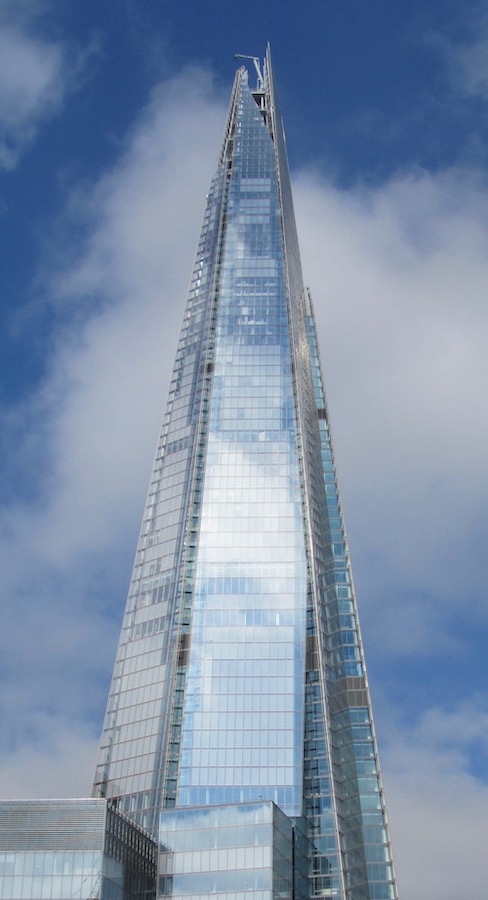 THE great thing about the viewing platforms at the Shard is that, apart from giving you a close-up view of the peak of what is a striking piece of architecture, there’s just so much to see.
THE great thing about the viewing platforms at the Shard is that, apart from giving you a close-up view of the peak of what is a striking piece of architecture, there’s just so much to see.
Whereas Dubai’s much taller Burj Khalifa affords views of little more than newly built residential towers, shopping malls and sand, the pyramid-shaped, glass-clad Shard lets you peer down on an amazing array of historic sites and buildings.
Buckingham Palace (the London home of Britain’s Queen Elizabeth), the Houses of Parliament, the Thames with its bridges, St Paul’s Cathedral, the monumental Tate Modern art gallery, Tower Bridge, the Telecom Tower, the London Eye, they’re all spread out before you. There are famous sports venues – the distant arc of Wembley Stadium, the London Stadium (built for the 2012 Olympics), and the Oval cricket ground.
The railway lines snaking out from the nearby London Bridge Station offer an intriguing sight when seen from above. As you walk around the viewing galleries there’s always something new to see – Southwark Cathedral, the City of London and its high-rise office buildings with colourful nicknames such as the Gherkin, the Cheesegrater and the Walkie-Talkie, HMS Belfast, the London Eye – the list just goes on.
At one point while I was there some cleaners dangling on cables appeared outside, waving to visitors as they gave the green-tinted glass a good scrub.
Back on the ground, I found as I walked through the surrounding district that the Shard kept rearing up – towering above streets of shops or terraced housing, rising next to the tower at Tate Modern, or near Borough Market. It sometimes feels as if the tower is following you around.
Getting its measure: The 95-storey Shard, at 1,016 feet, is the tallest building in Britain, the fifth-tallest in Europe and the 96th tallest in the world. There are two viewing platforms, an indoor one on the 69th floor and a partially outdoor one on the 72nd, which together are marketed as The View From the Shard. The building was designed by Italian architect Renzo Piano and opened in 2013. It is 95 percent owned by Qatar.

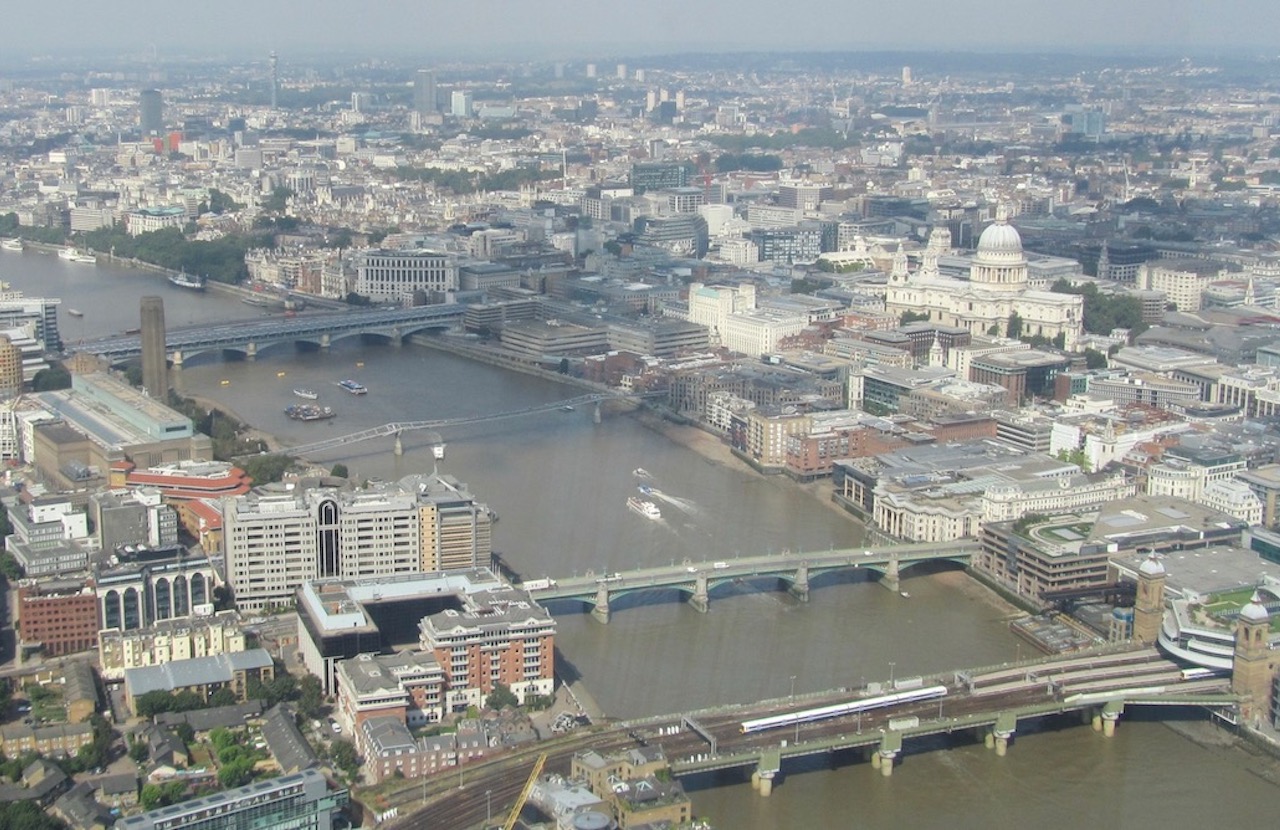
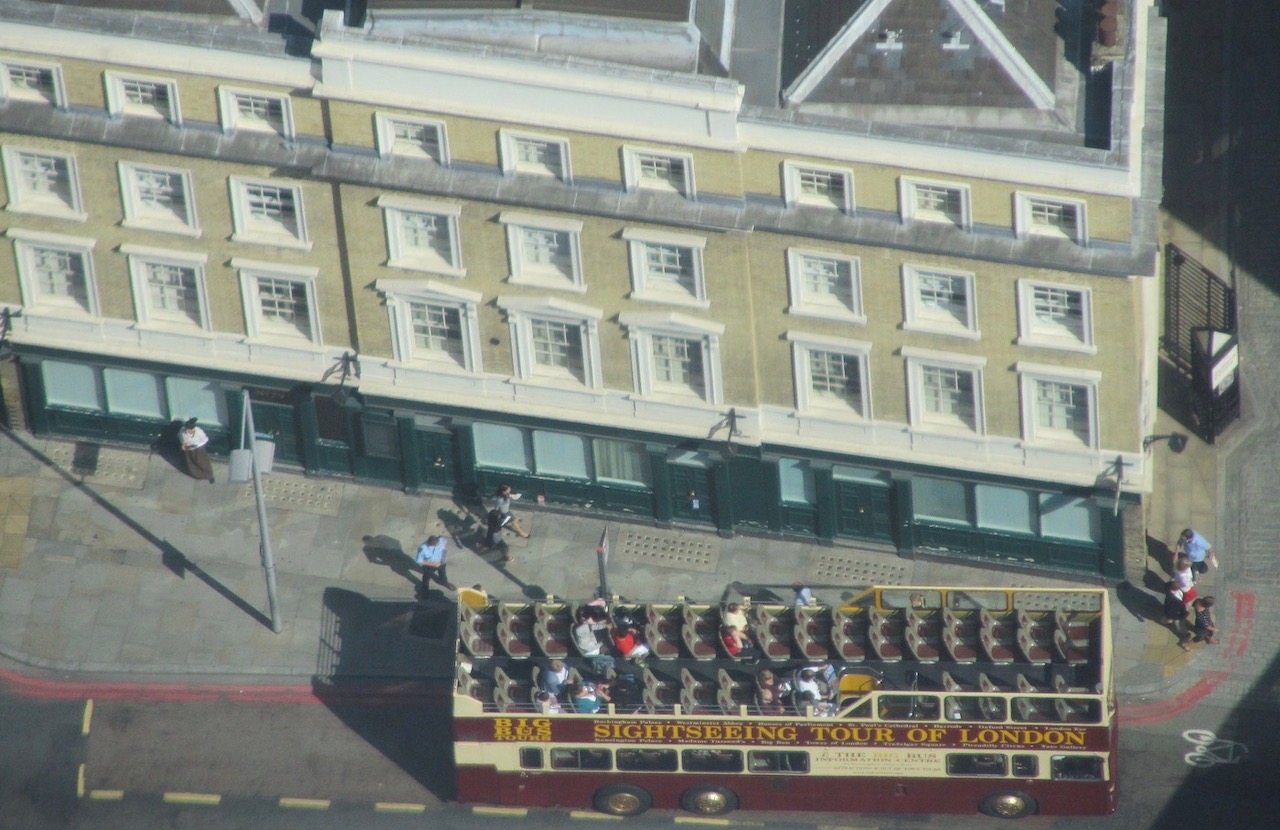
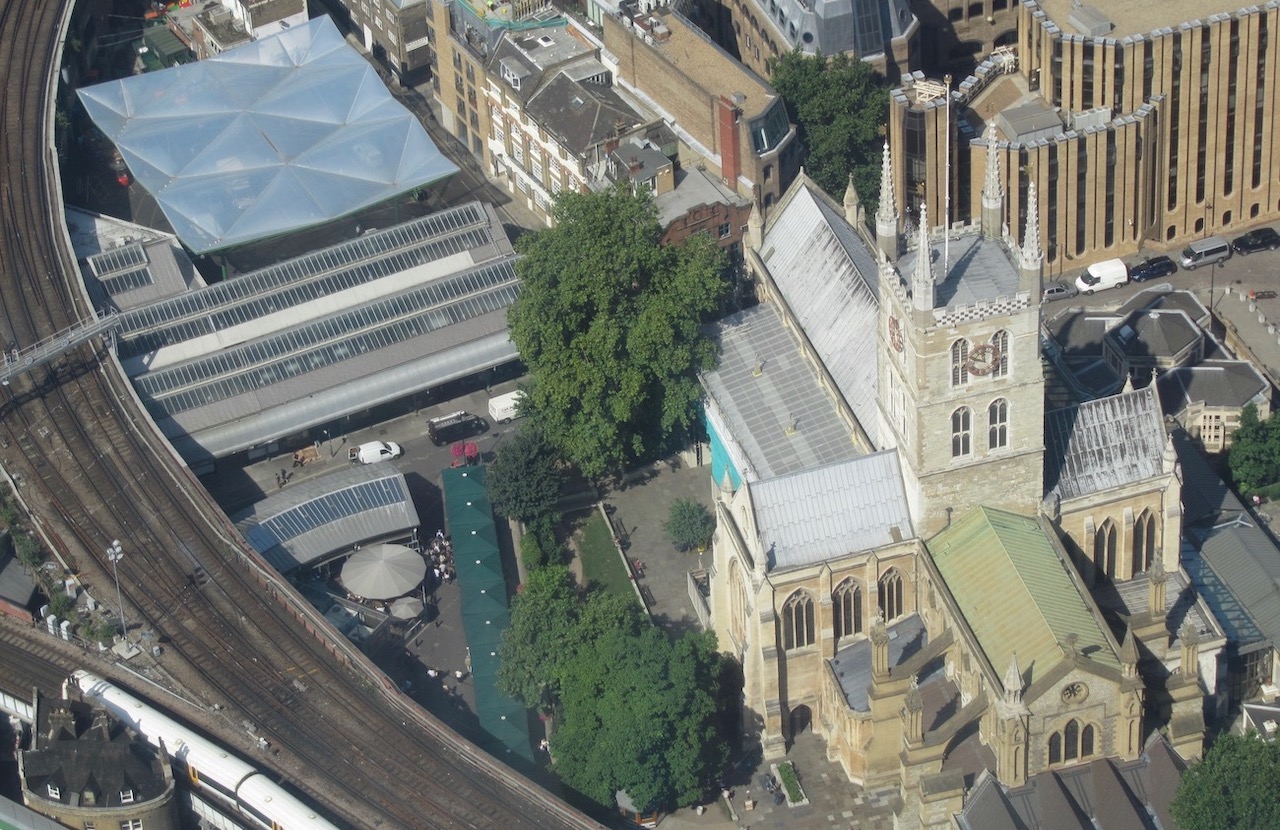

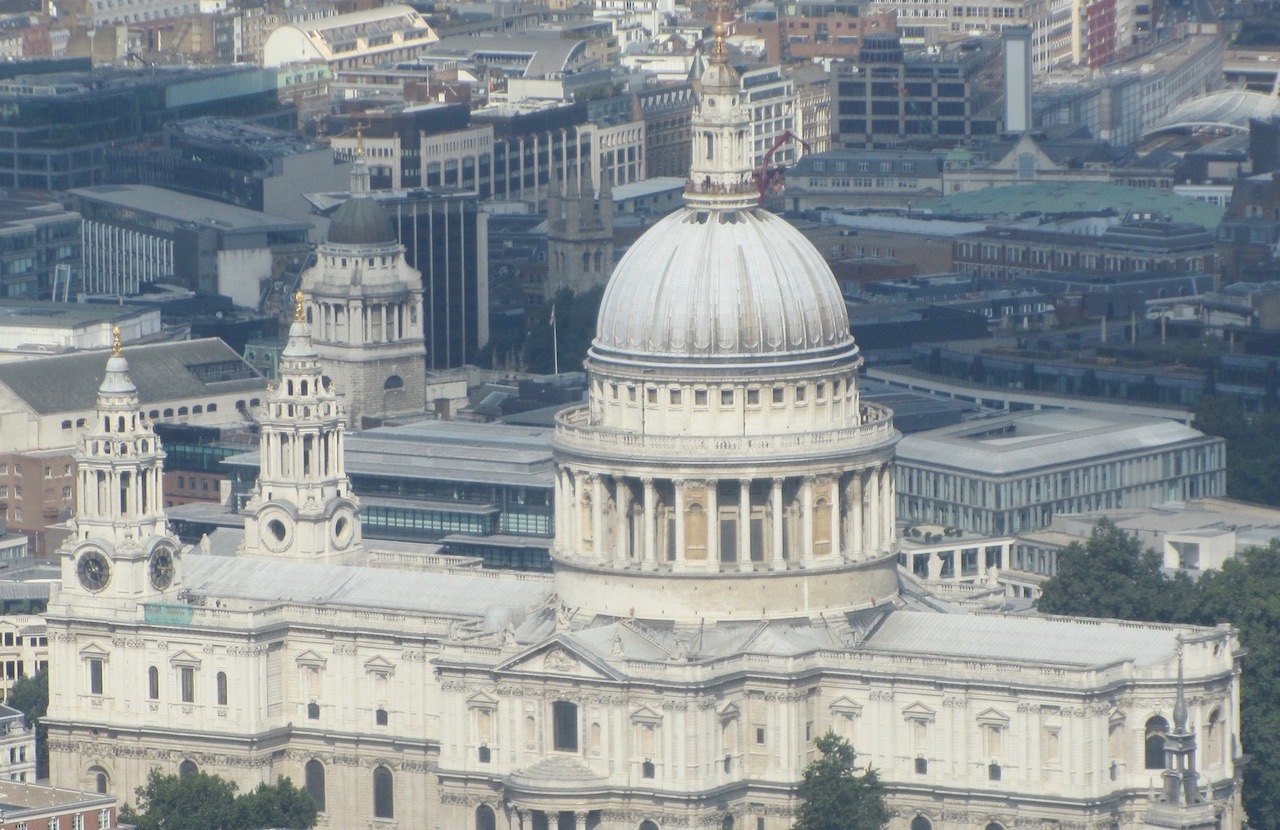

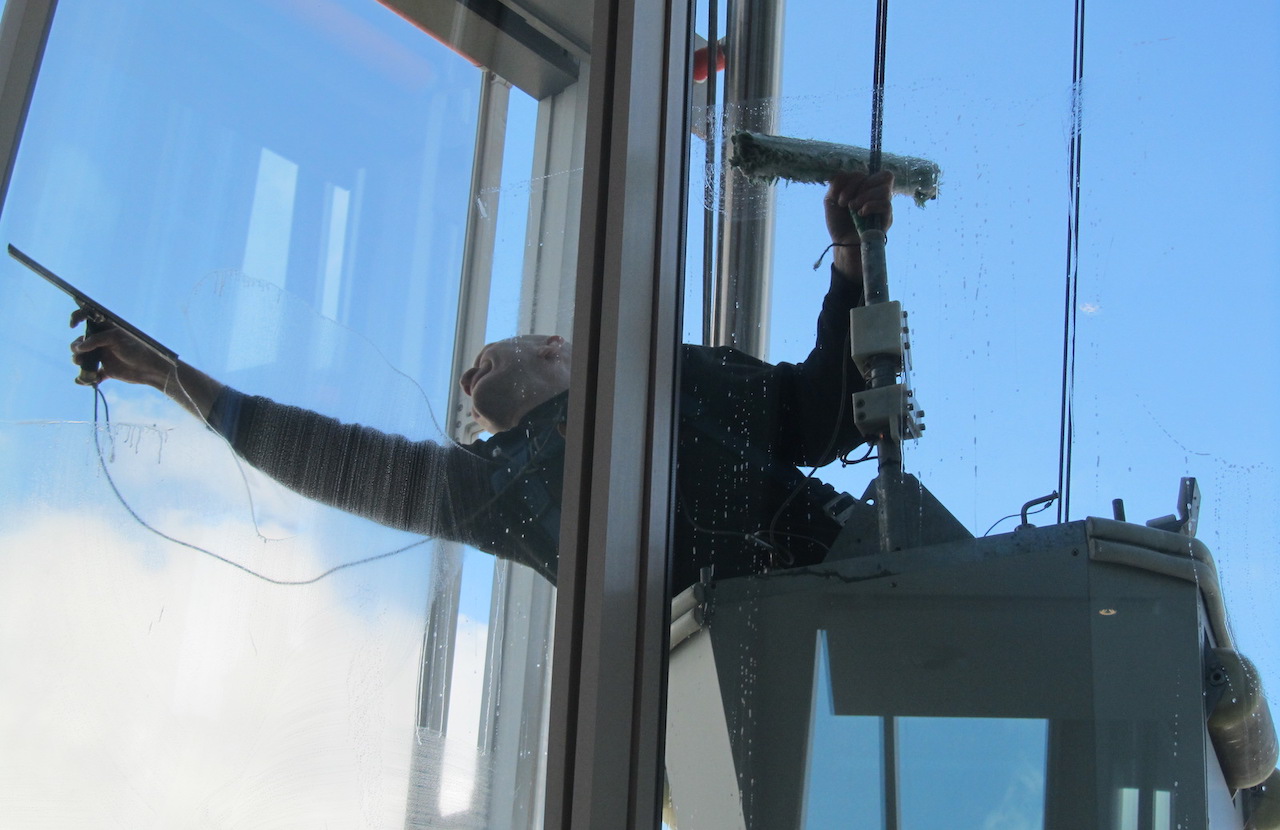
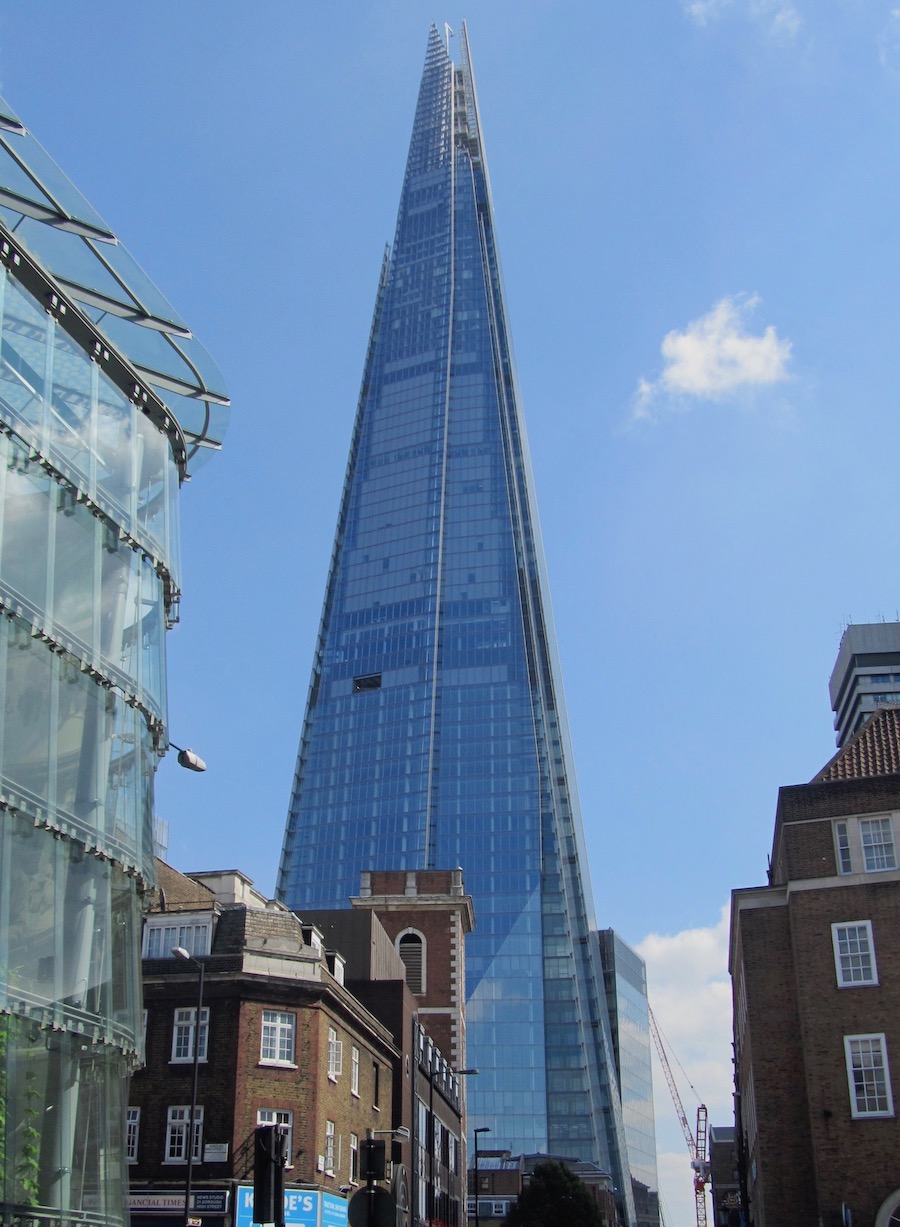
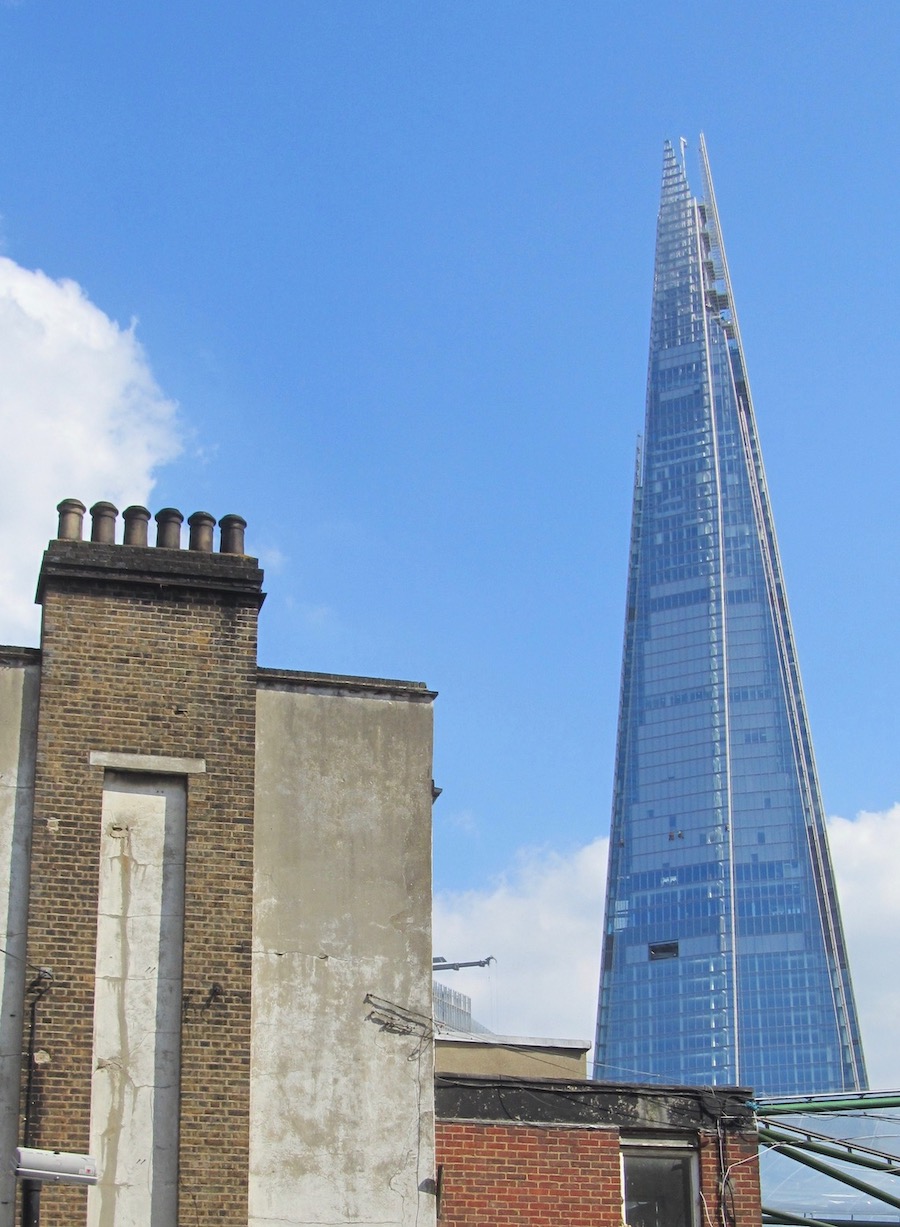
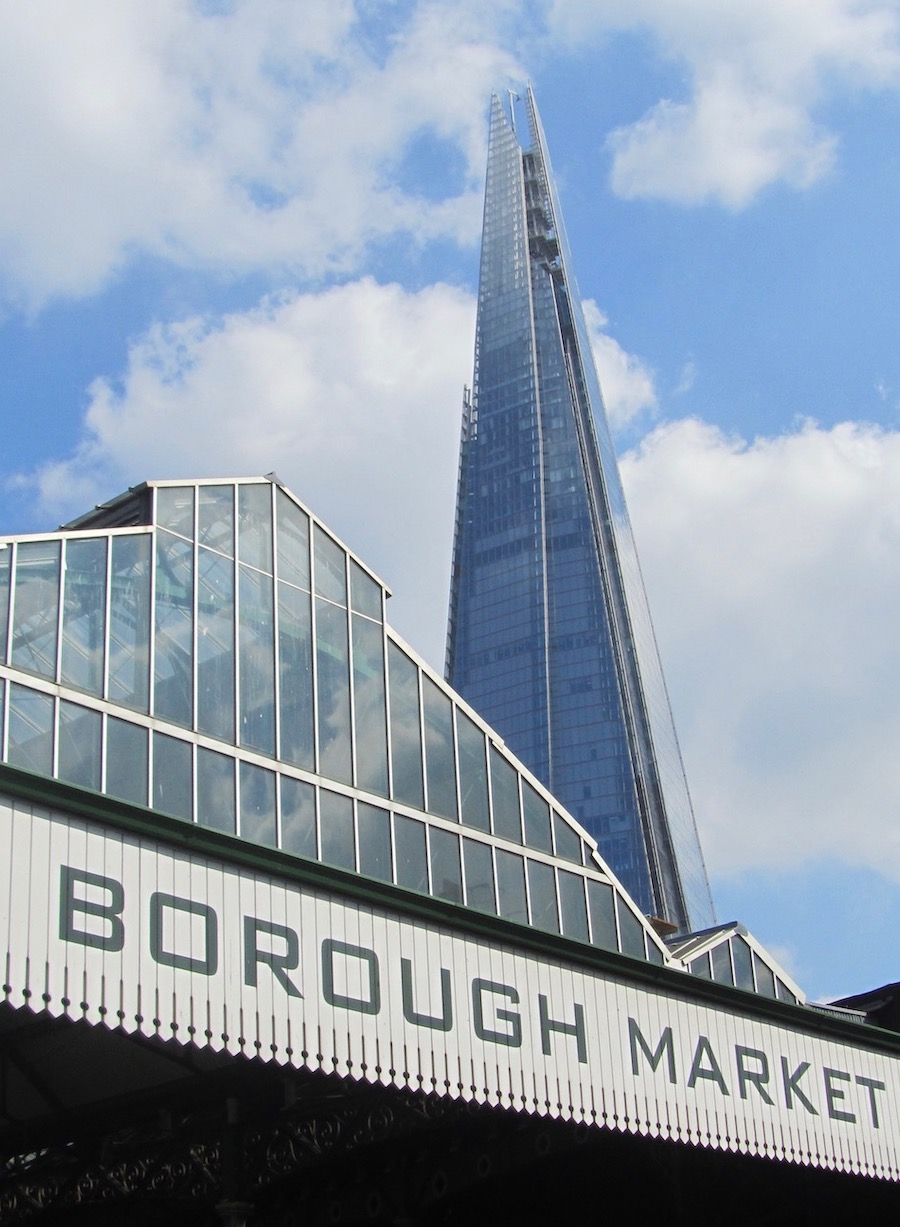
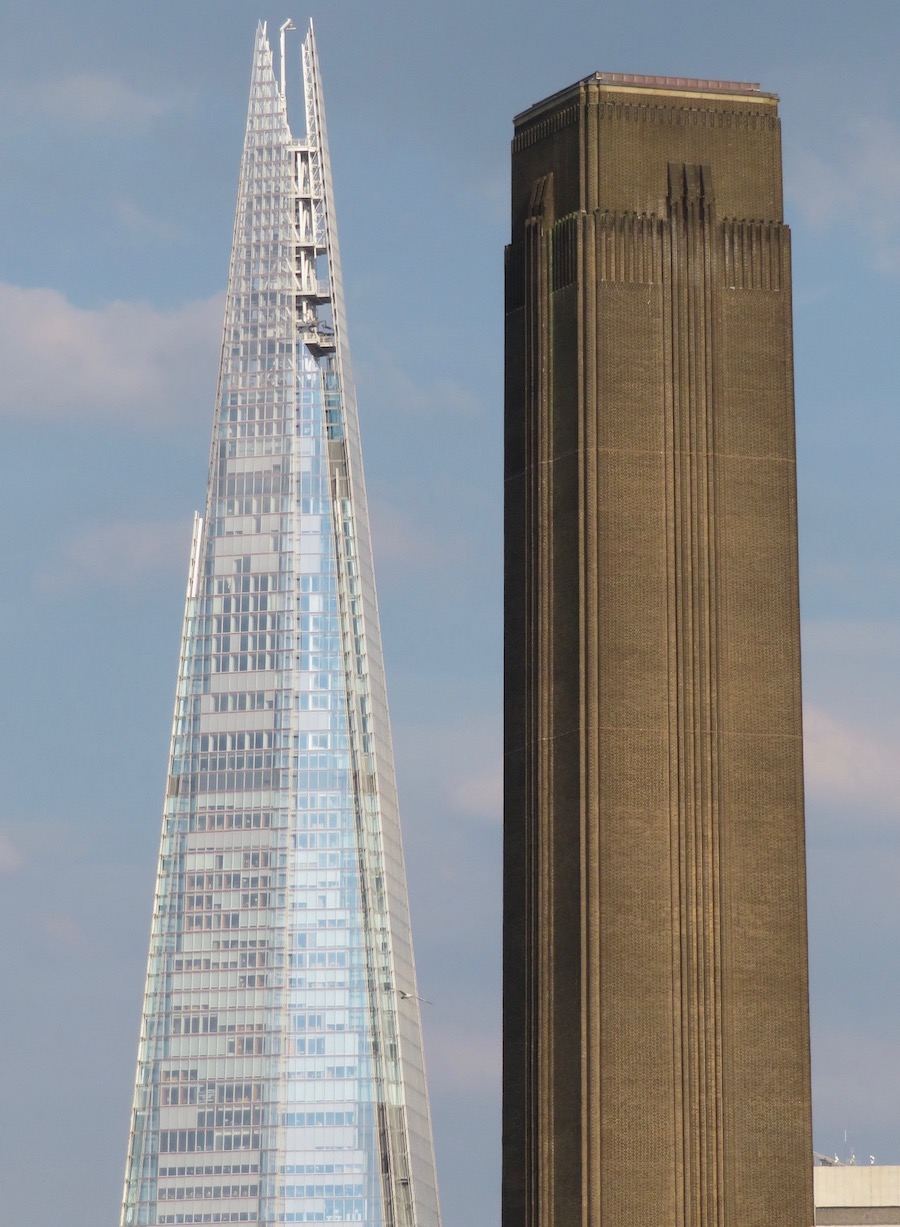
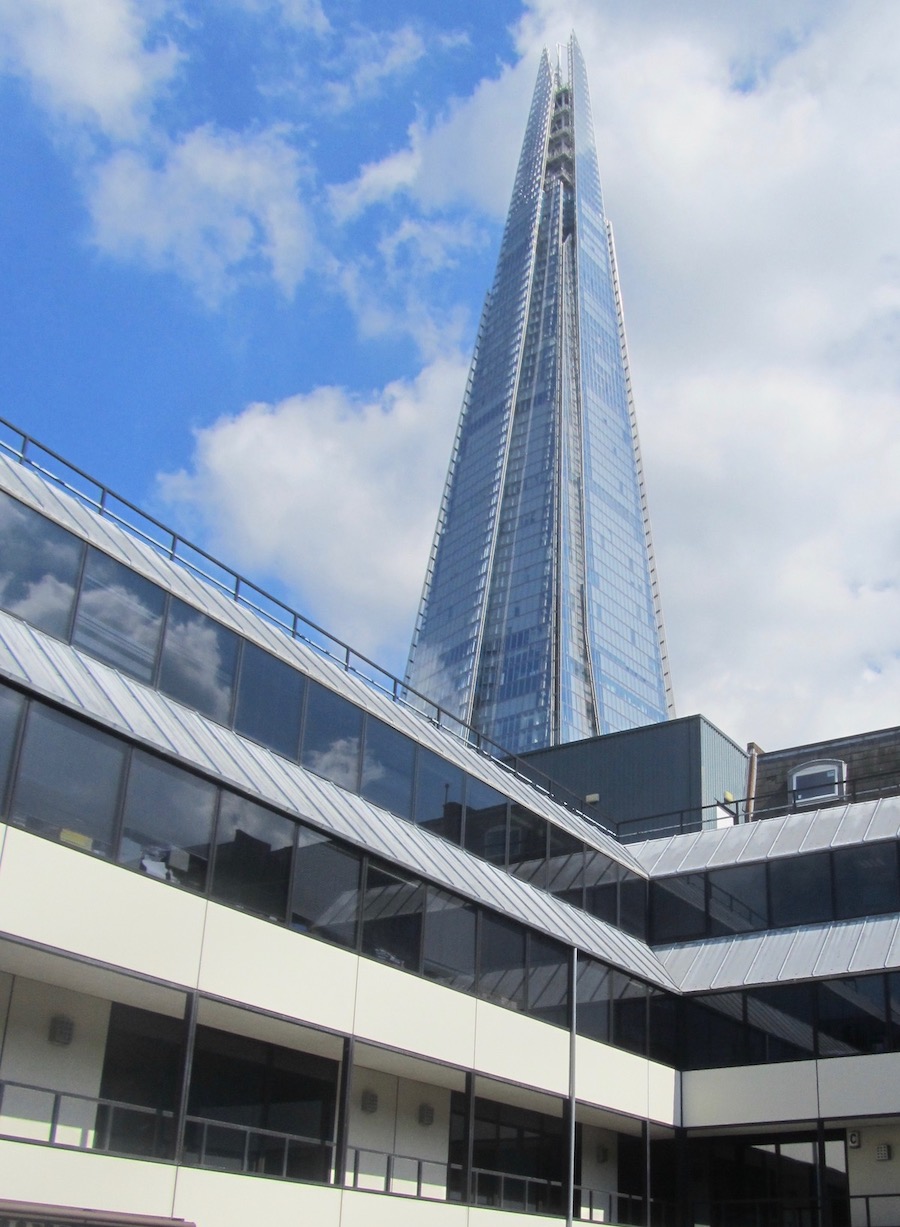
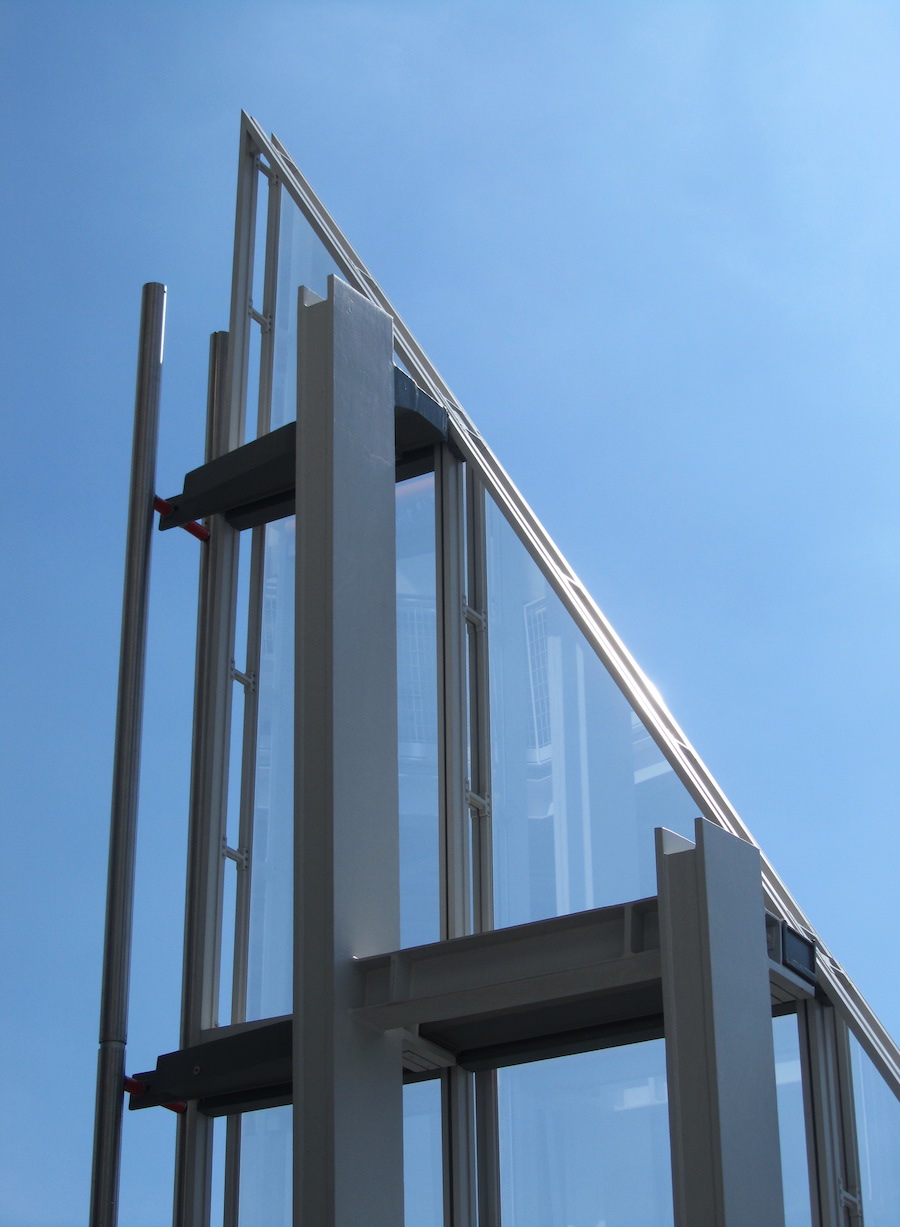
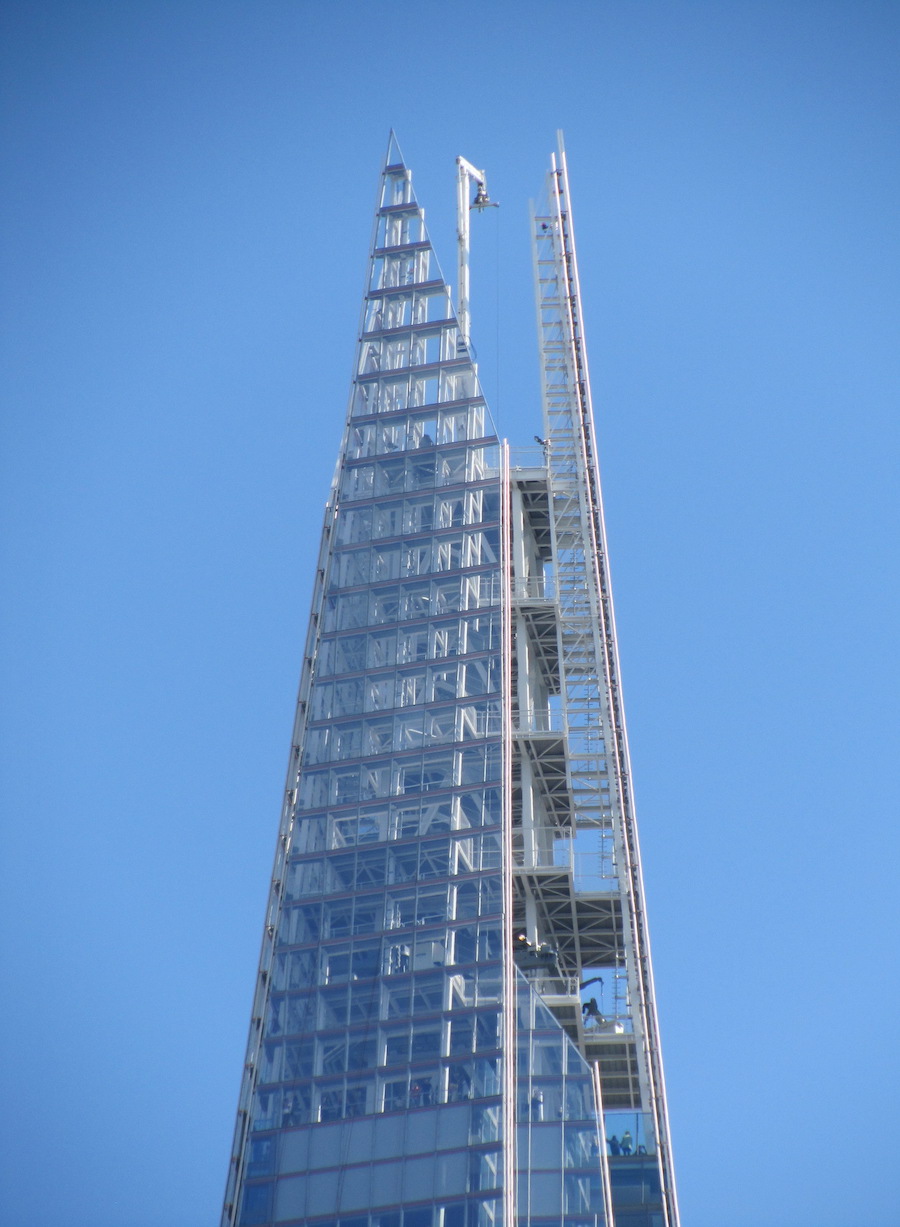
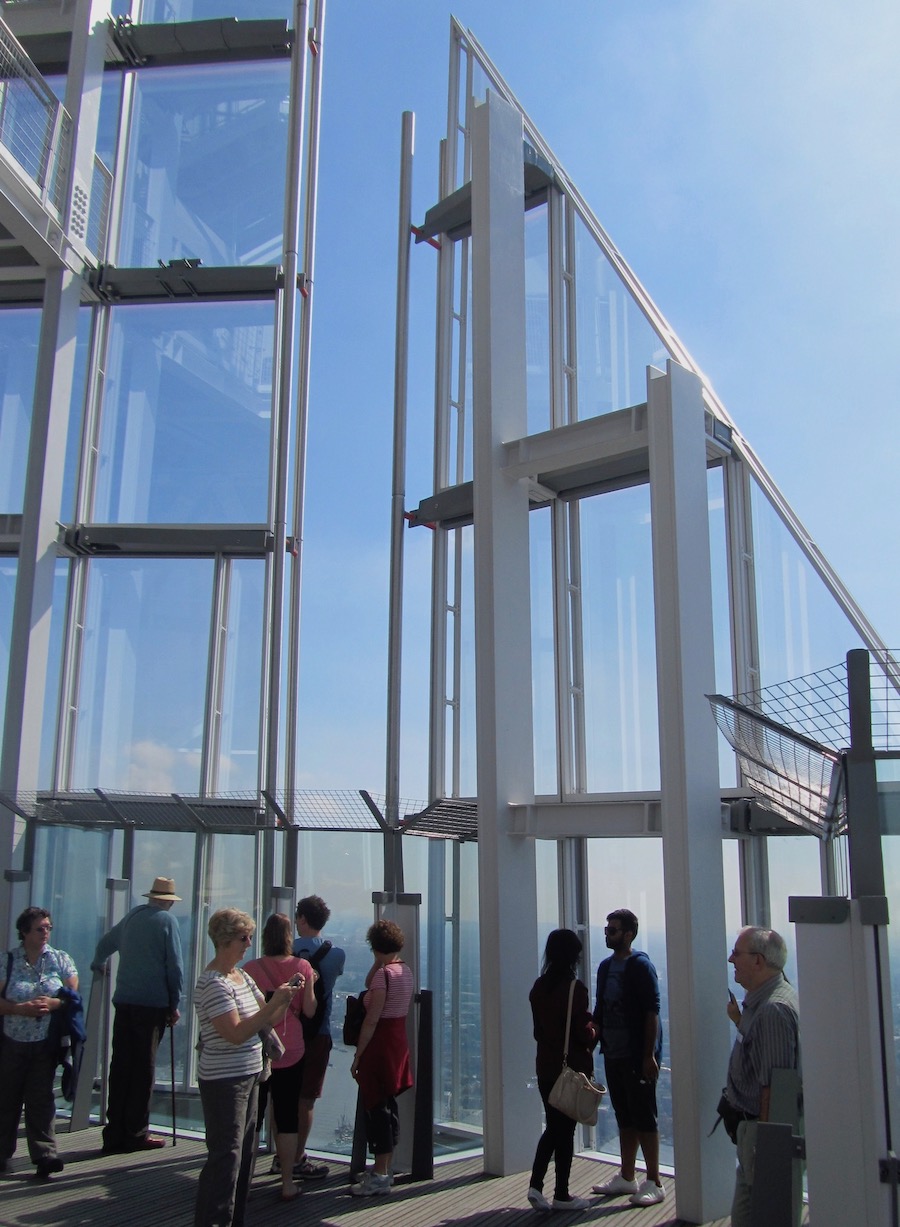
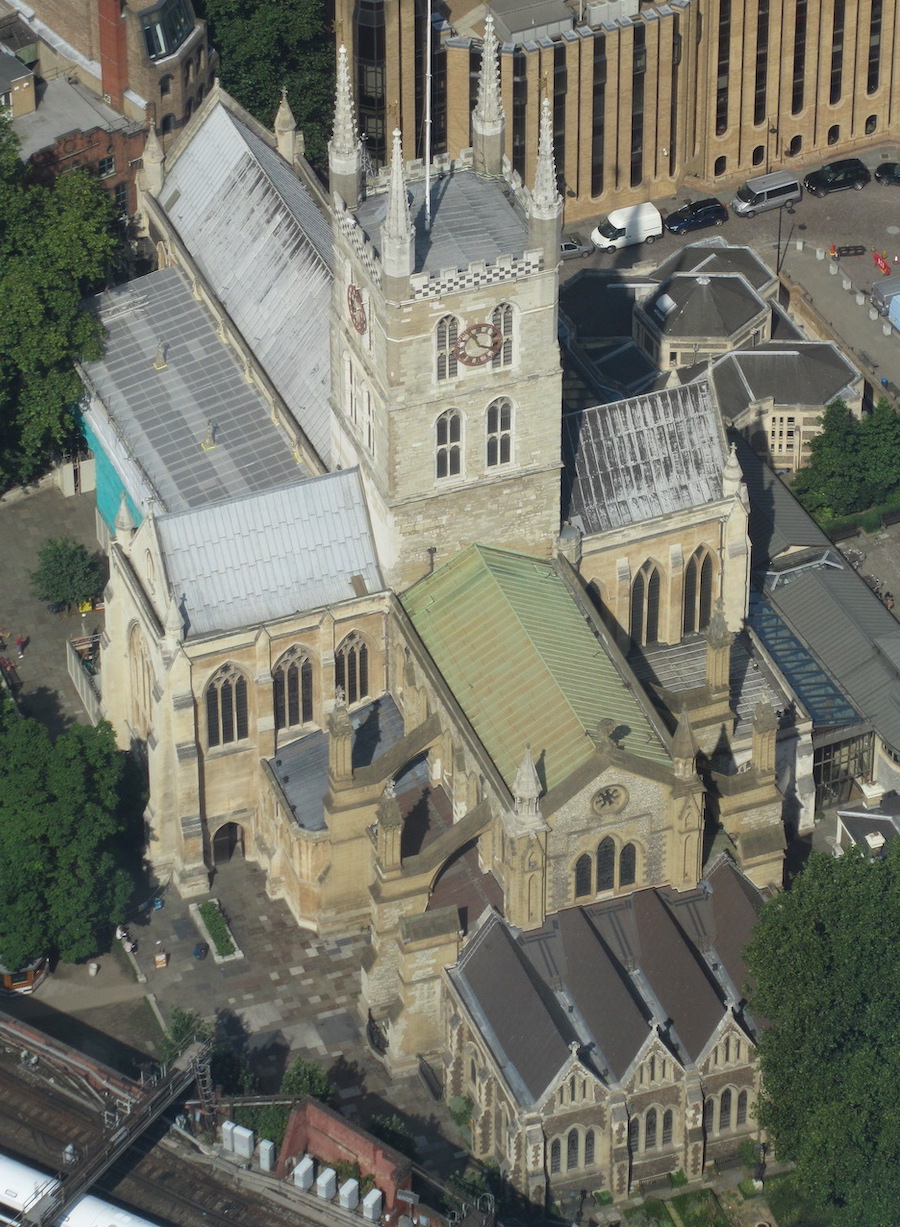
Burj Khalifa, Dubai

THE daddy of them all, still the world’s tallest building nine years after it opened, the Burj Khalifa soars above the city of Dubai and has helped cement its position as a tourism hotspot. While it’s undoubtedly fun to look out from the record-holder’s viewing platforms, and the height is impressive, as mentioned above there isn’t really a lot to see.
In one direction you gaze across the villas of the Jumeirah district towards the Gulf, the minarets of mosques built to a uniform design sticking up above the rooftops. There’s the skyscraper canyon of Sheikh Zayed Road, and the densely developed Dubai Marina and adjoining clusters of skyscrapers.
The Burj is surrounded by the Downtown Dubai residential and commercial area which includes the giant Dubai Mall, and other large developments are dotted around. Look in the direction away from the Gulf and the city soon peters out, and beyond lies the desert. Dubai’s towers are all so new, so similar, so numerous, that the views left me a little cold.
The fact that the Burj retains its world’s tallest record is thanks to the 2008 global financial meltdown. Several taller buildings were planned, including one in Dubai, but the projects were cancelled because of the crisis. This was a bonus for the building’s owners, who had expected they would soon have to come up with new ways of promoting it as a tourist attraction once its record status was usurped.
Until the opening ceremony in January 2010 the building had been known as the Burj Dubai, but it was then announced that it would be renamed the Burj Khalifa after Sheikh Khalifa, the President of the UAE and ruler of the adjoining (and much richer) emirate of Abu Dhabi. This came a month after Abu Dhabi gave Dubai a crucial $10 billion bailout as the financial meltdown reached the Gulf.
The Burj Khalifa had a starring role in the 2011 movie Mission Impossible – Ghost Protocol, with Tom “he does all his own stunts, you know” Cruise swinging around outside in trademark heart-stopping manner.
Getting its measure: The 160-storey Burj Khalifa, at 2,716.5 ft, is the tallest building and free-standing structure in the world, and holds many other records. It boasts the world’s highest outdoor observation deck on the 148th storey, and there are other decks on two lower floors – they’re branded as At the Top. The entrance – because it’s Dubai – is in a shopping mall. The tower was designed by American architect Adrian Smith.
Top picture: The side of the Burj Khalifa.
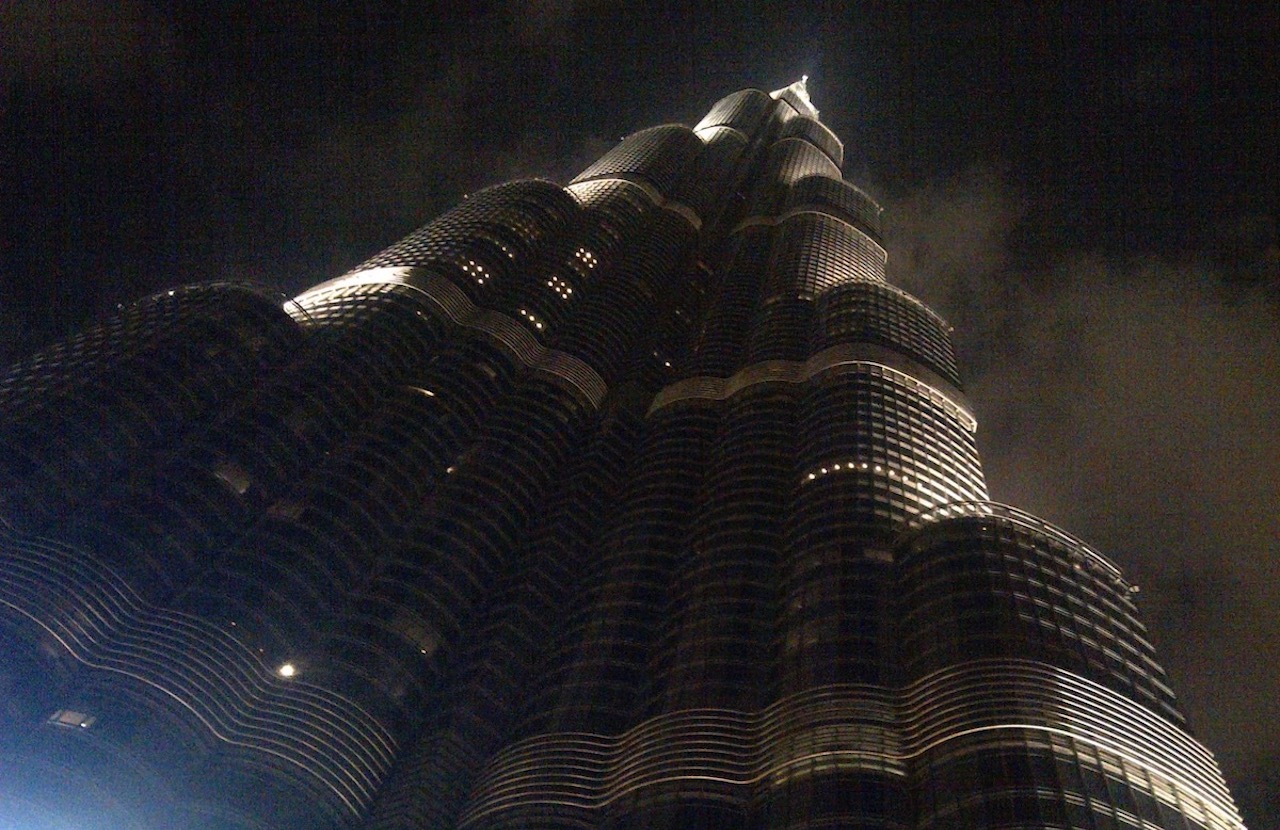
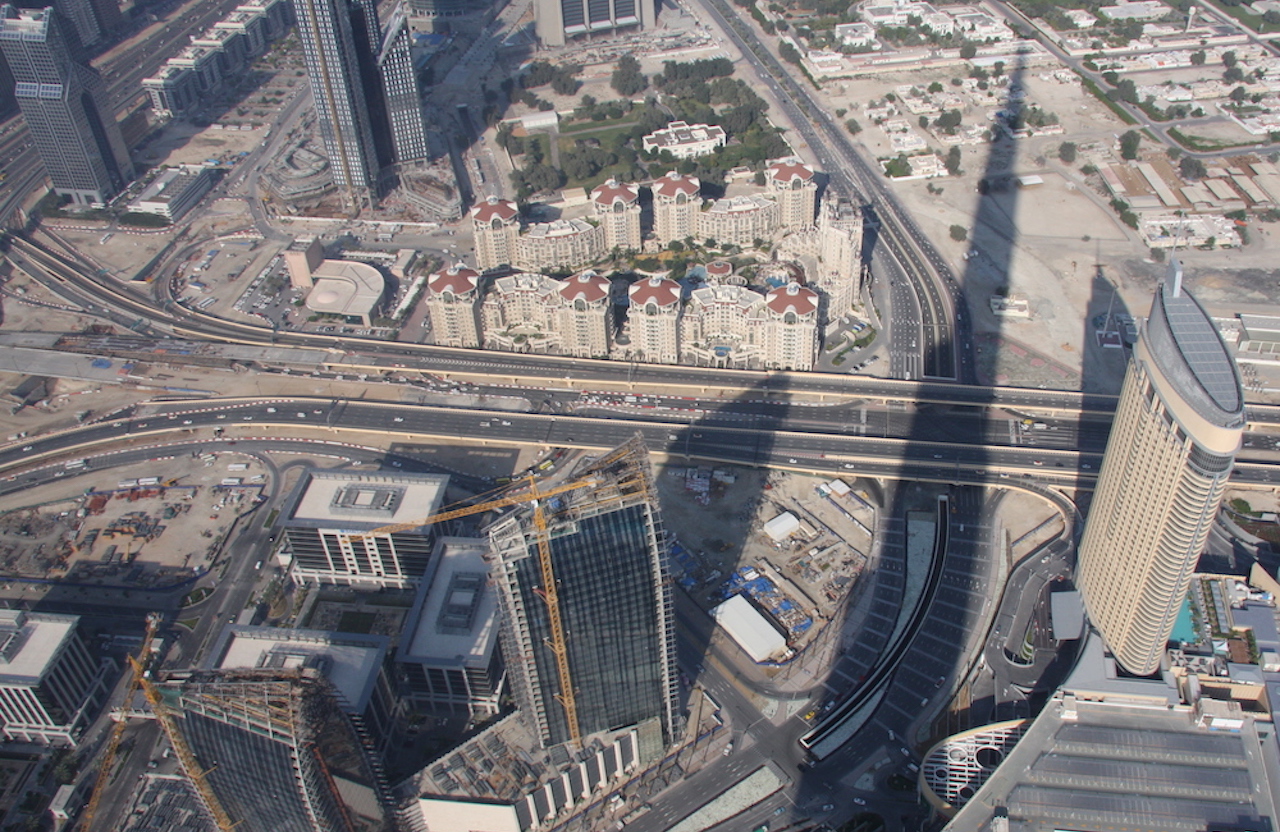


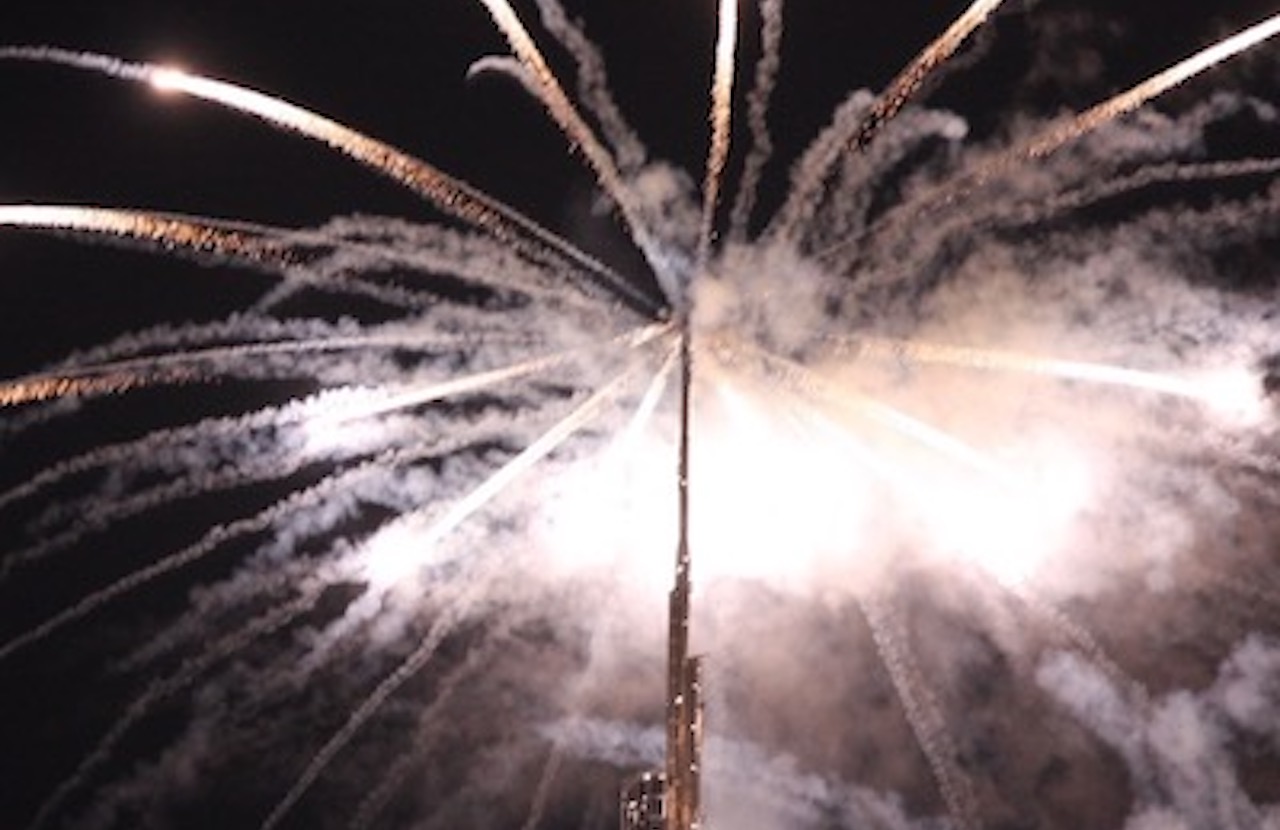
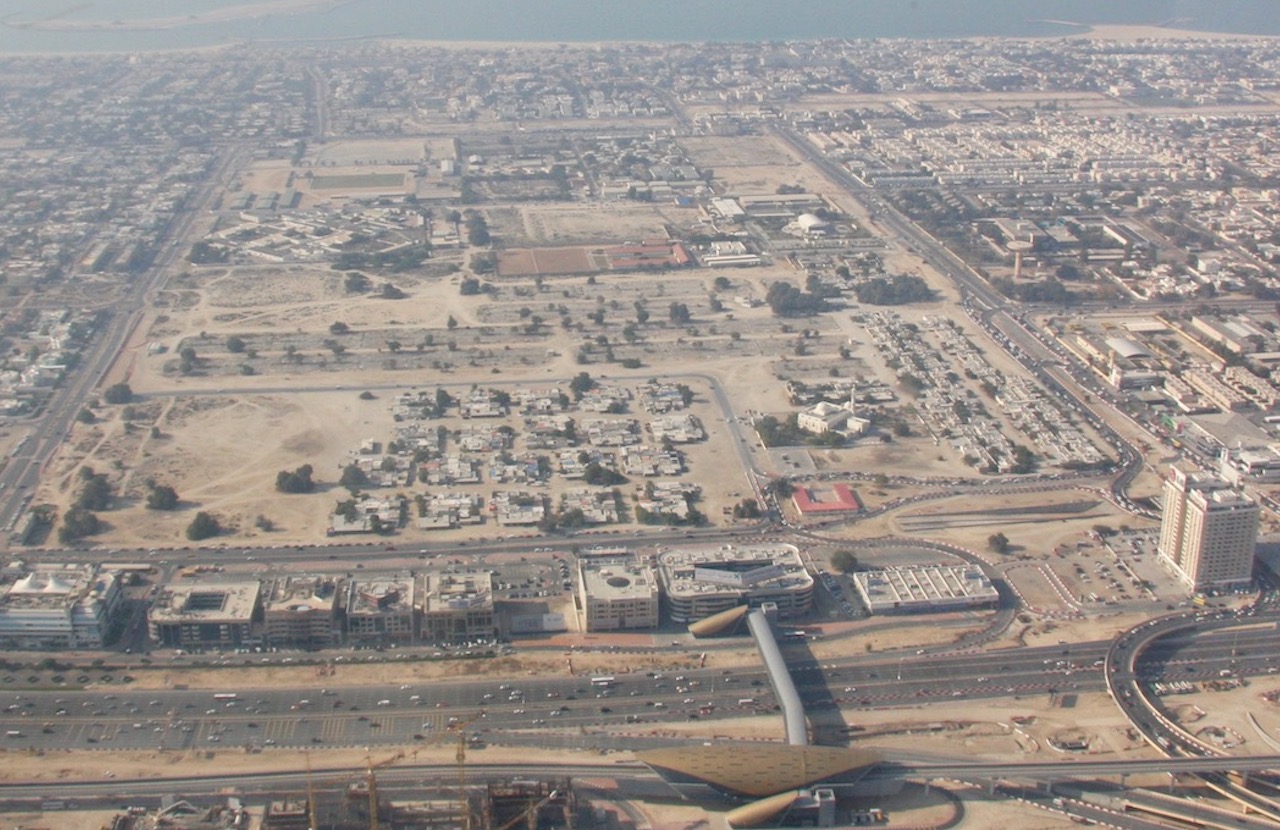
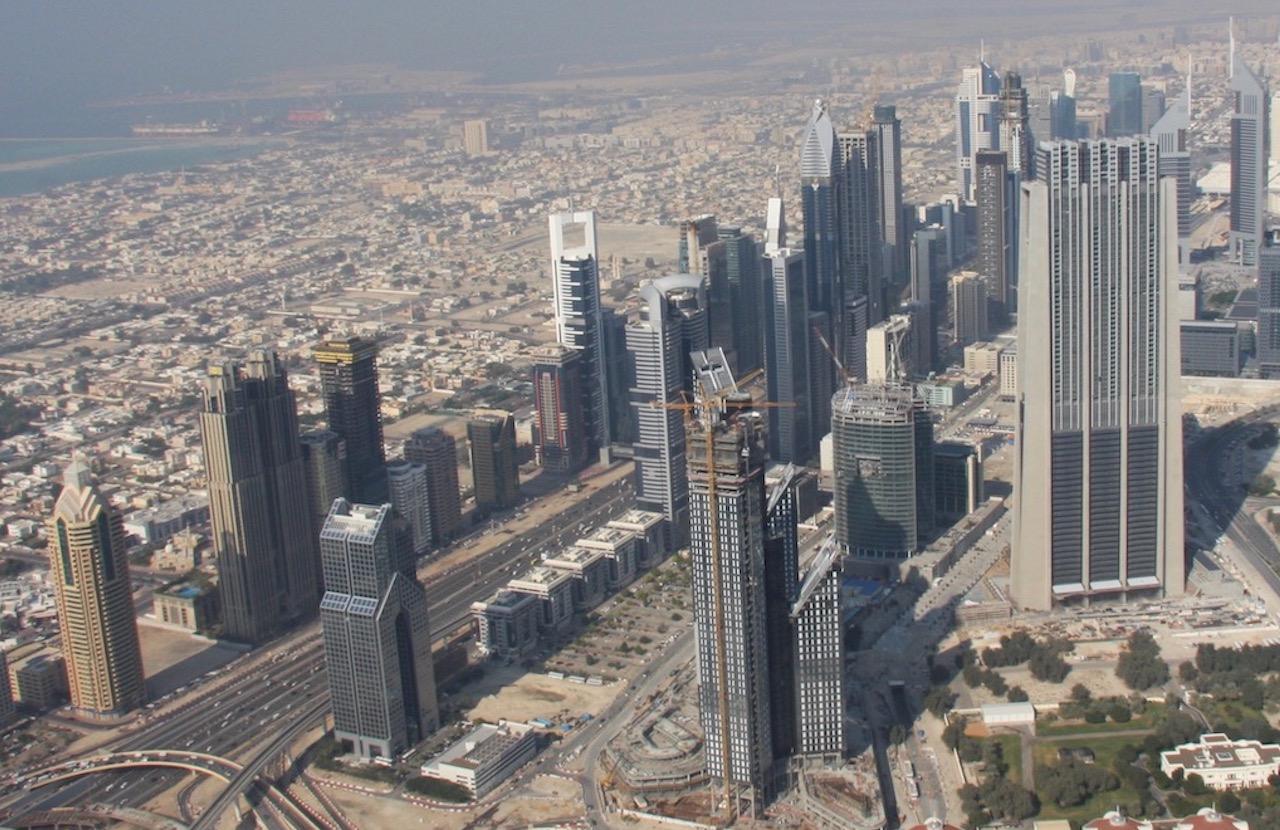

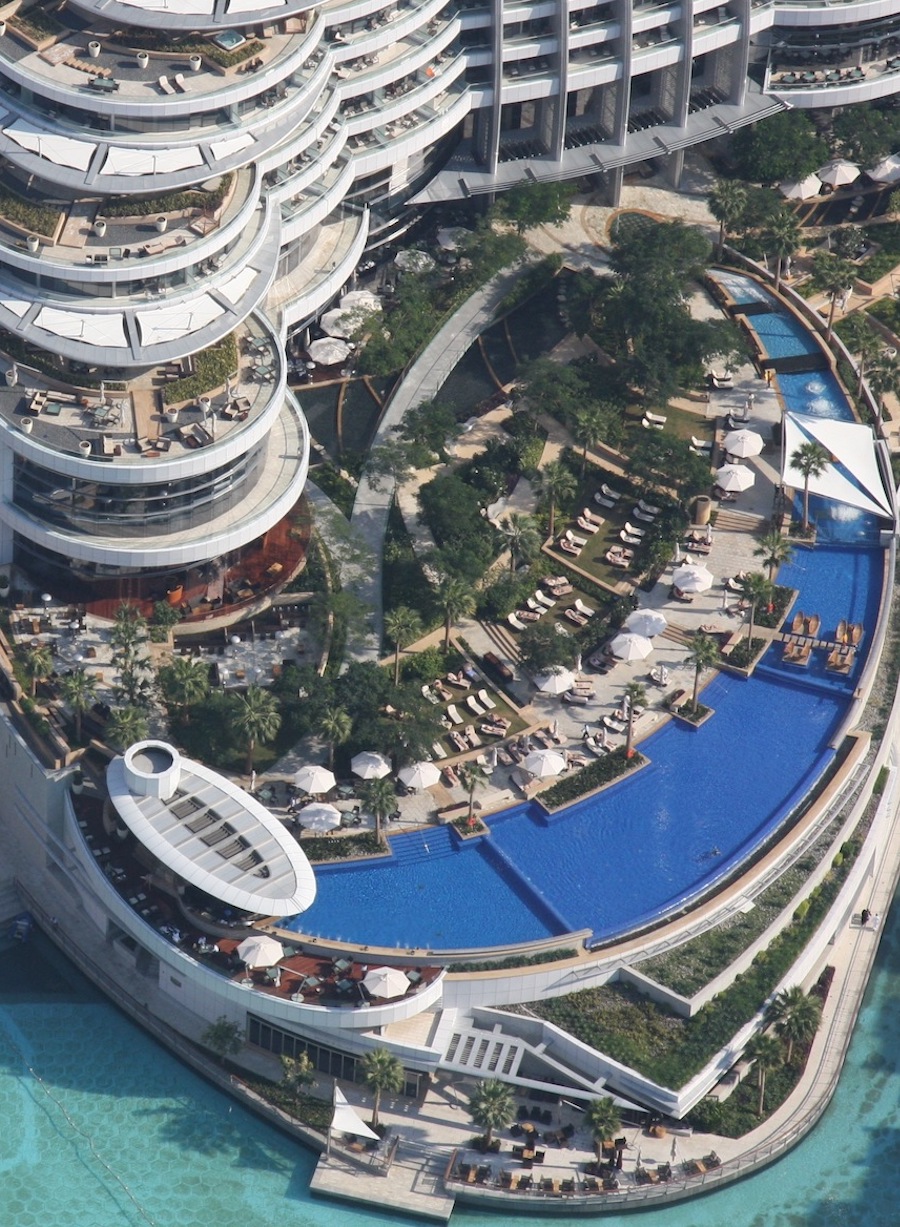
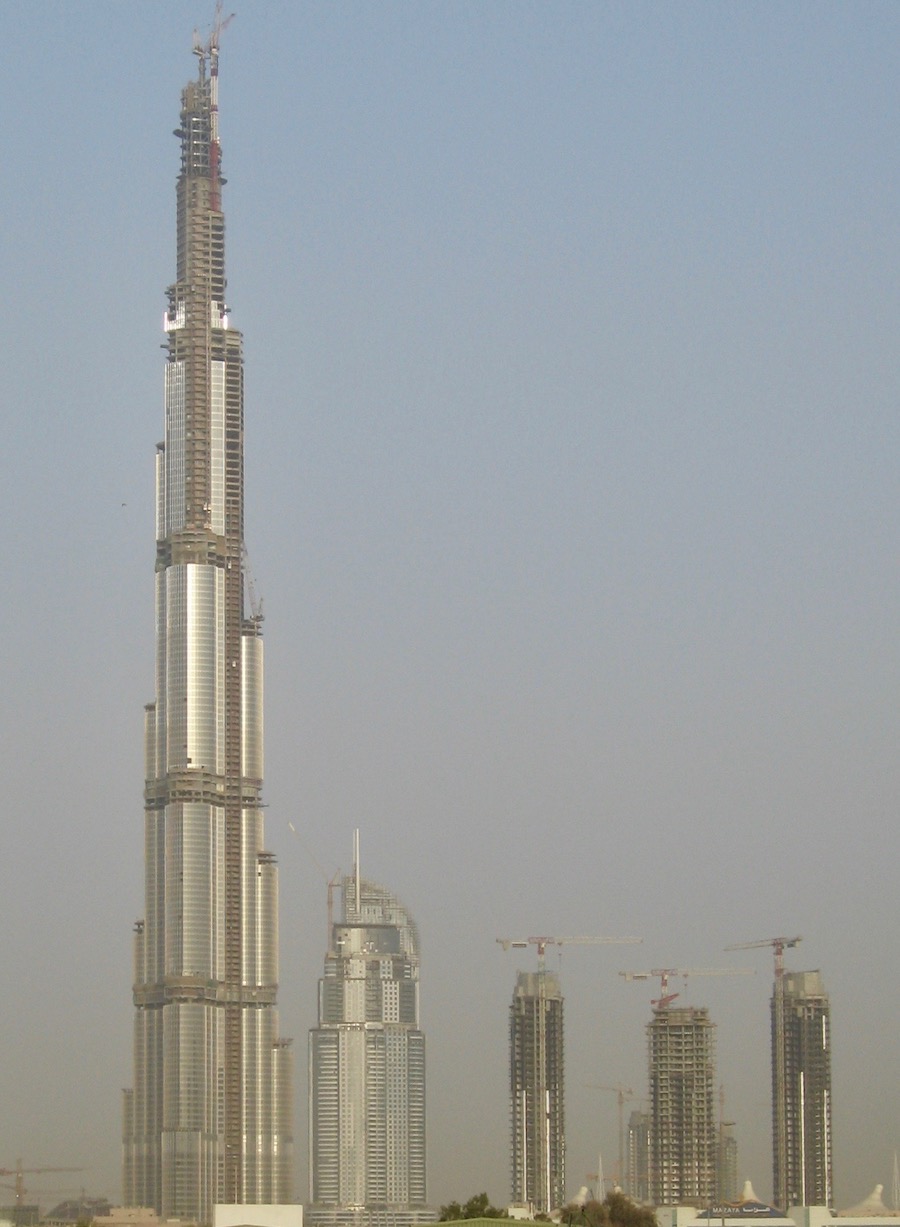

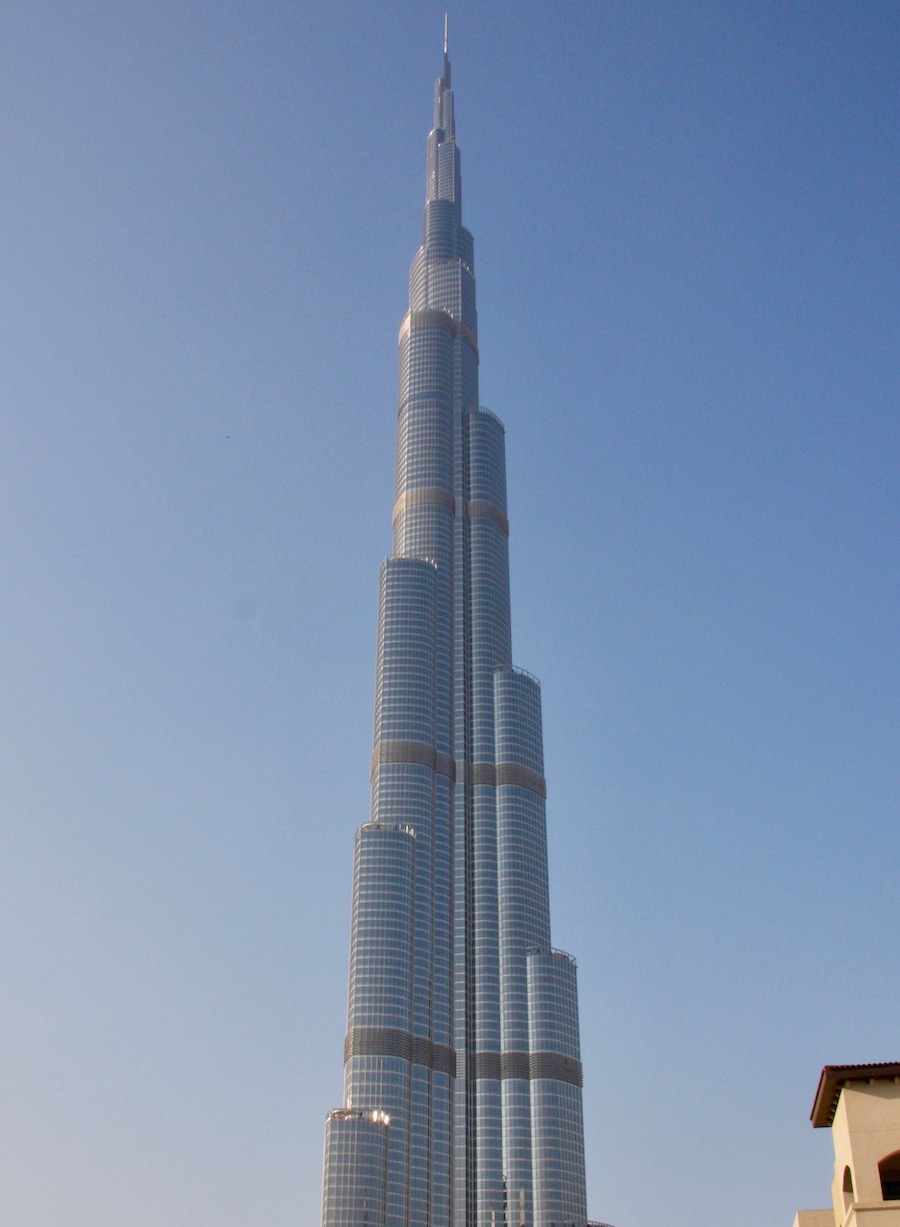
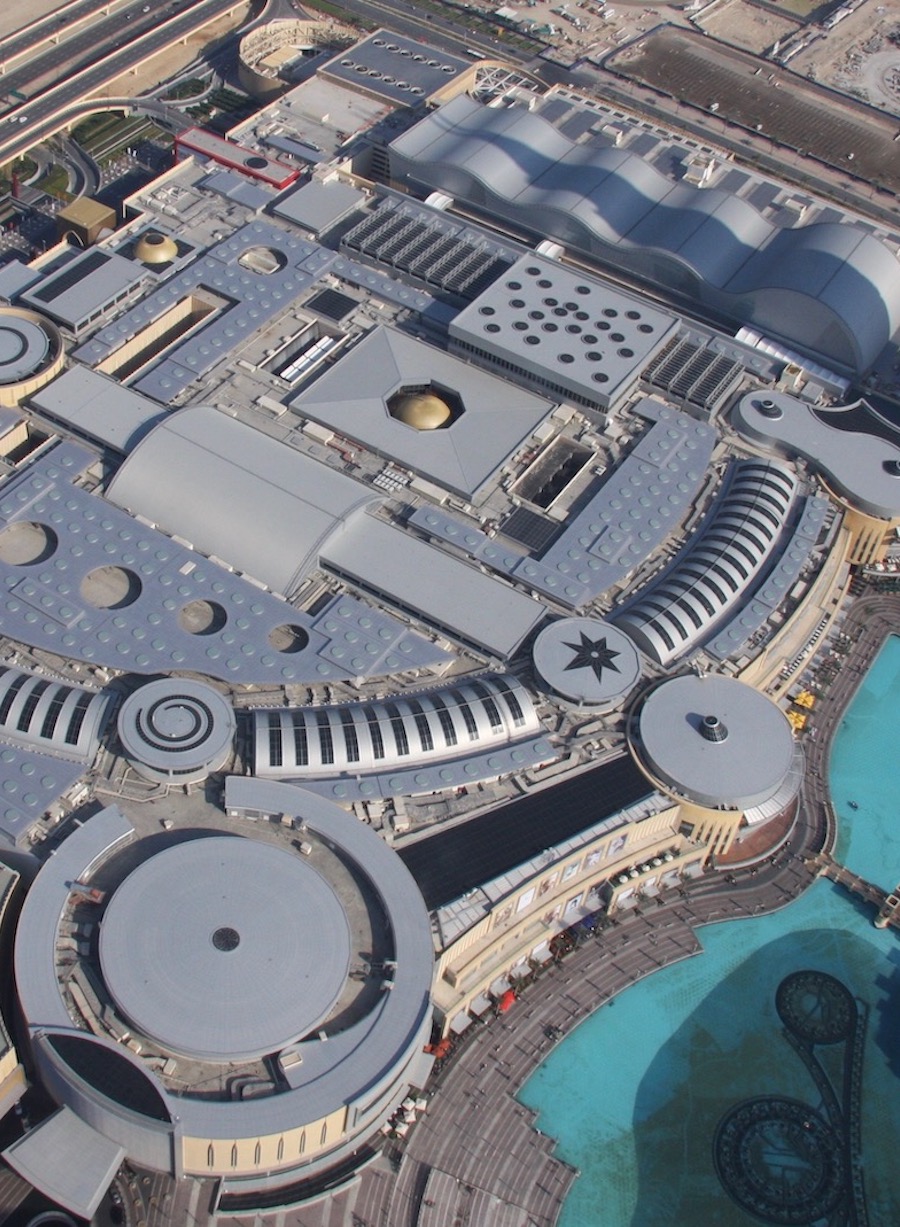
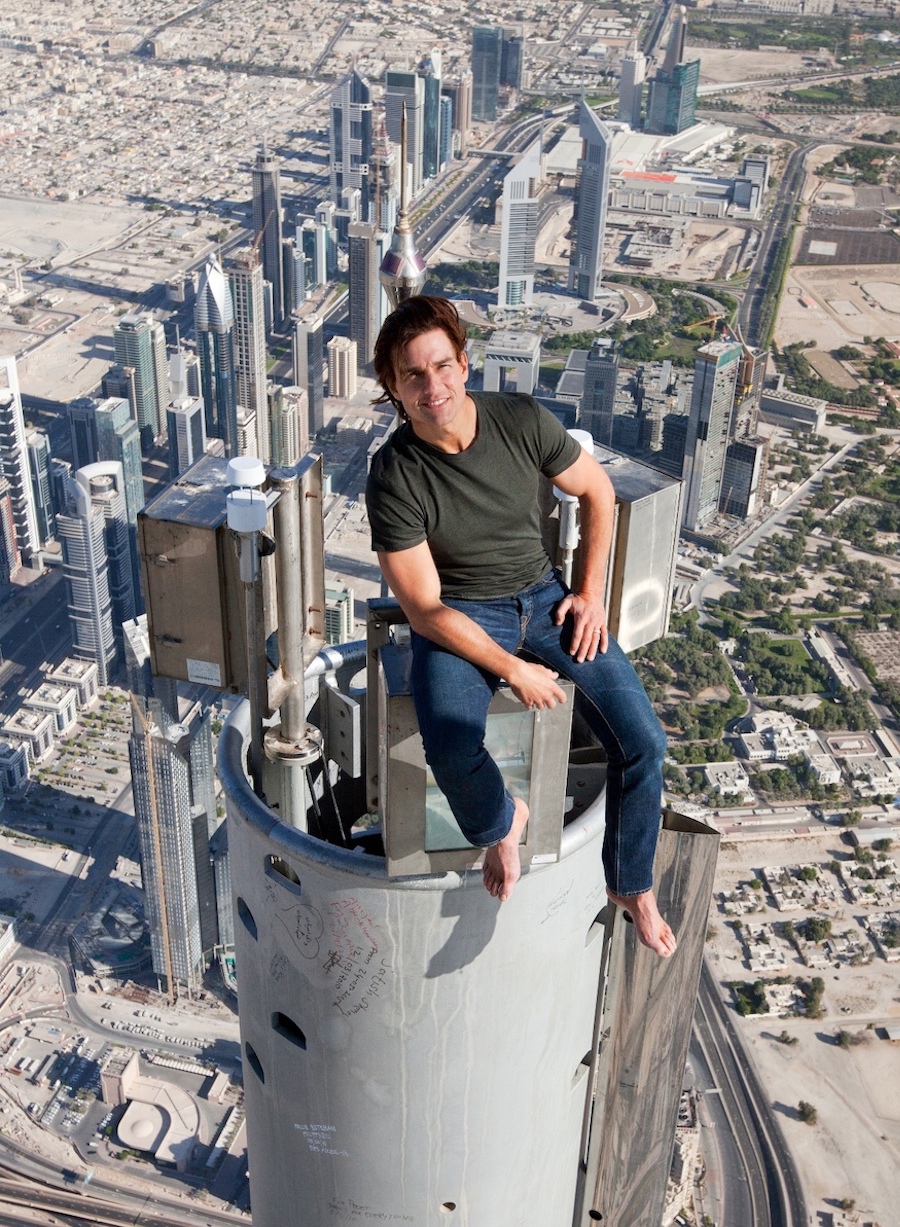

Tokyo Skytree

THE viewing decks on this mighty broadcasting tower let you see with your own eyes just how ridiculously large Japan’s capital is. Many districts are fairly low-level, sensible in a country that’s more at risk from earthquakes than most.
At ground level you can walk through historic temple quarters or along smart shopping streets oblivious to the fact that you’re in the world’s most heavily populated metropolitan area. The Greater Tokyo Area covers 5,200 square miles and has a population of more than 37 million.
While those who are afraid of crowds can remain blissfully unaware of this at sea level, all becomes clear when you ascend the Skytree’s high-speed lifts. Step out onto either of the two viewing decks and stretching away into the distance is mile after mile of urban sprawl.
On the day I visited this continued for as far as I could see, until the office blocks and apartment buildings dissolved into the distant haze. If it had been clear I’m told I would have been able to see Mount Fuji 59 miles away. You can see rivers and their bridges and ancient temples set among vast areas of low-level buildings.
Incidentally, the earthquake issue is addressed on the Skytree’s website. The home page declares: “It is confirmed that every earthquake shock absorber used in Skytree, which is produced by KYB Corp., has no problem with its performance. We are sorry for causing so many worries.” This comes into the category of “but I wasn’t worried until you mentioned it”, as it follows a scandal in which KYB admitted fabricating data about product quality.
Getting its measure: The Skytree is 2,080 ft high, making it the world’s second tallest structure after the Burj Khalifa. It’s the tallest tower globally – in the complex and sometimes confusing world of high man-made thing categorisation a tower excludes habitable buildings such as the Burj, even though the word ”burj” means tower in Arabic. There are two viewing decks, one at 450 metres (1,476 feet) and one at 350 metres (1,148 feet). The Skytree was designed by the Nikken Sekkei architecture firm, and opened in 2012.
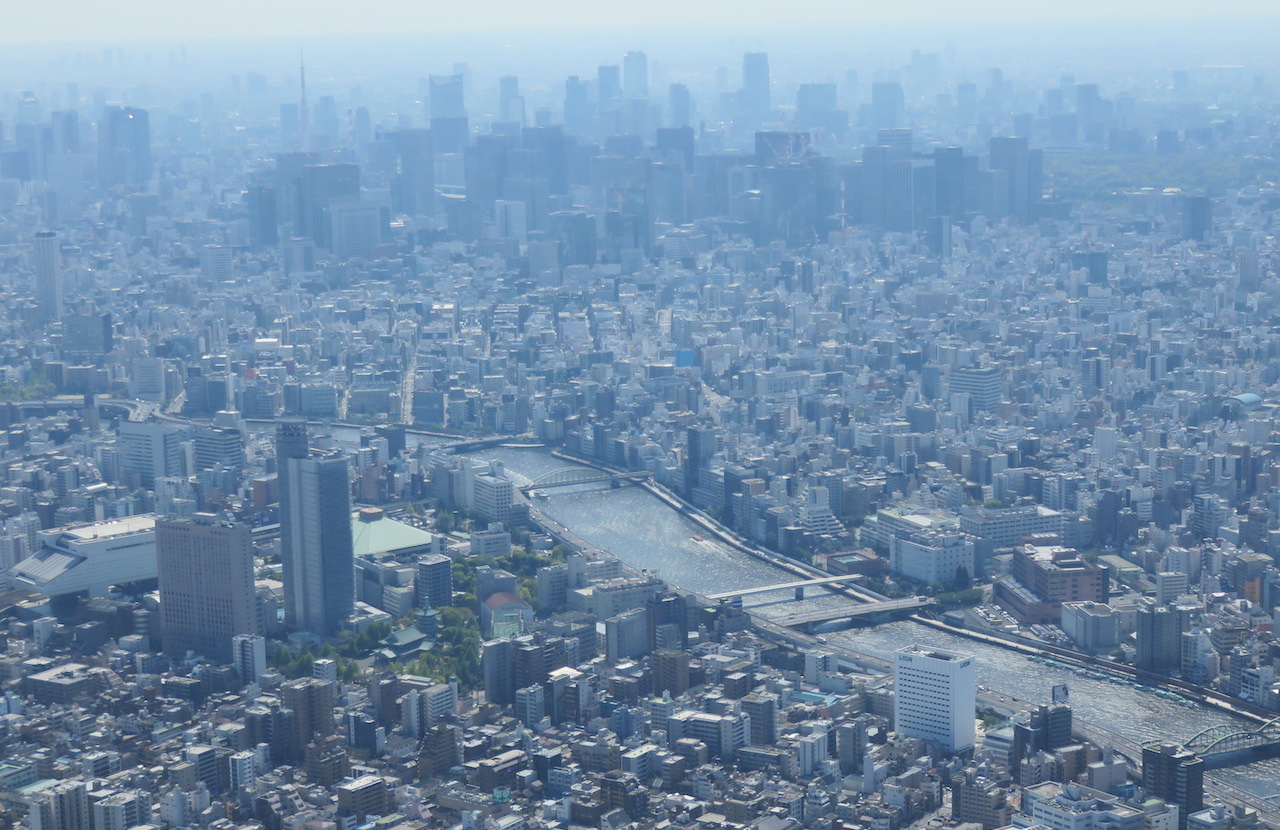
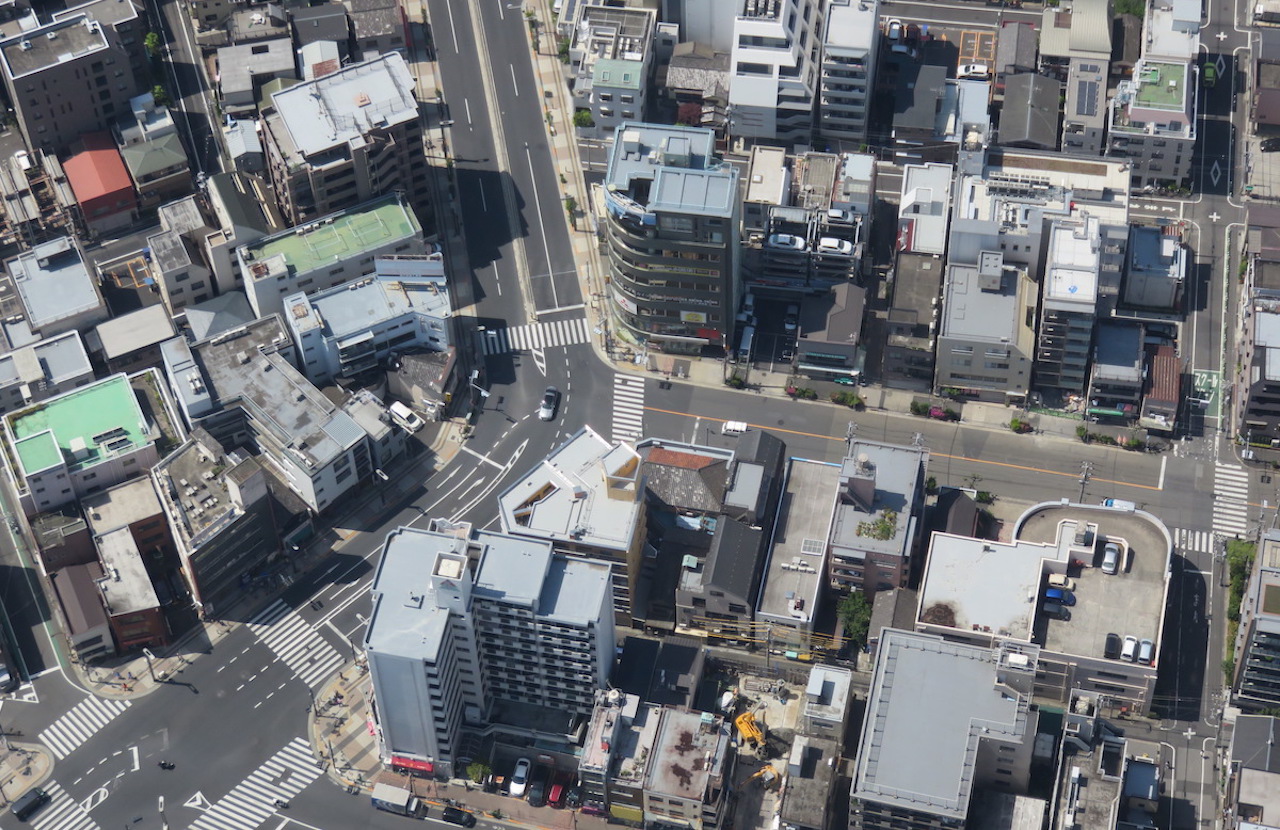
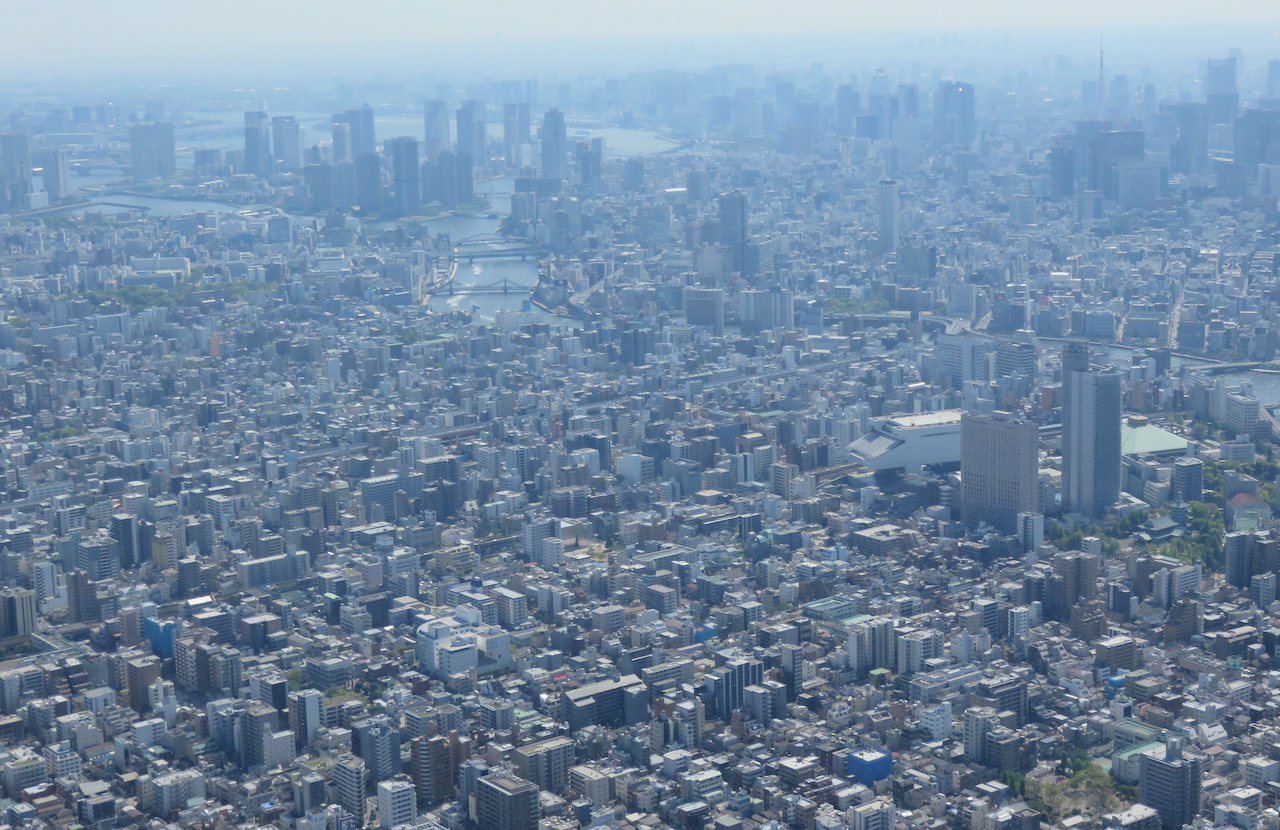
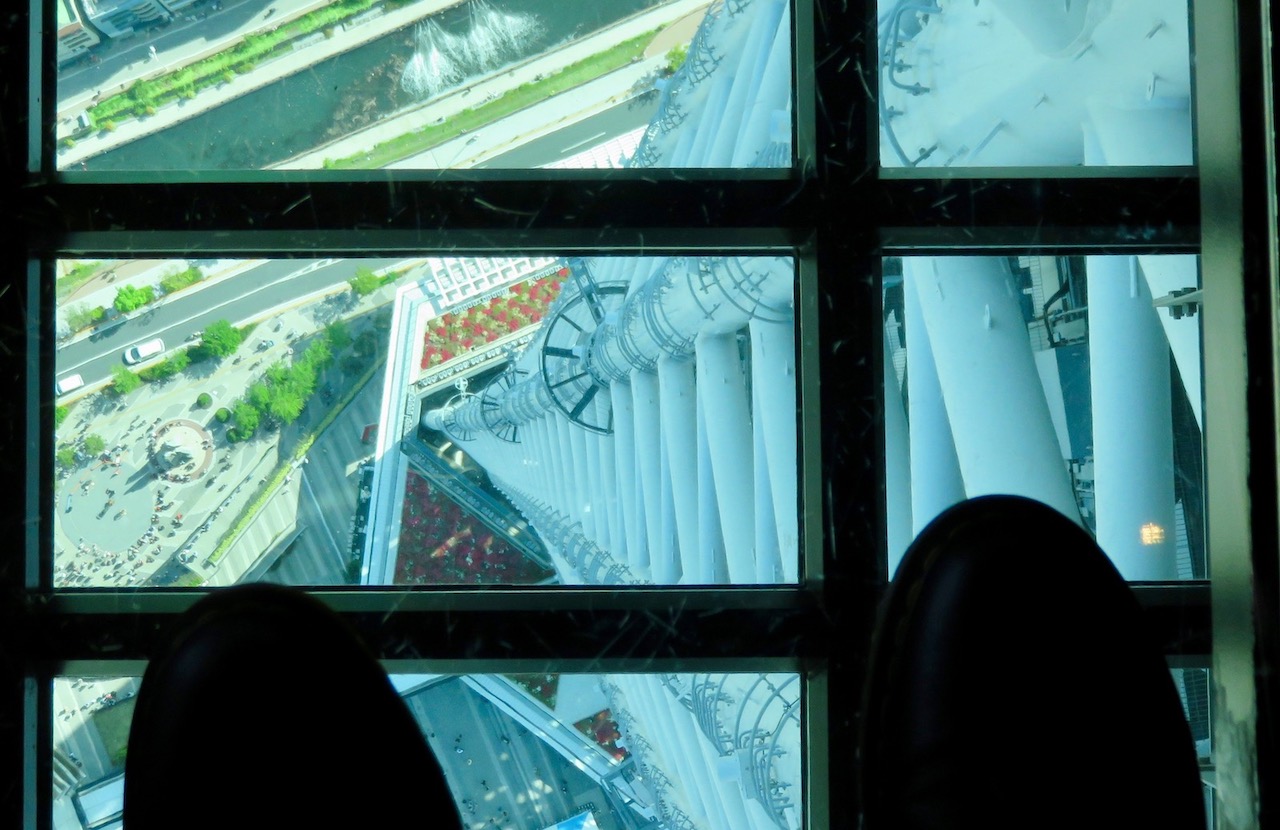

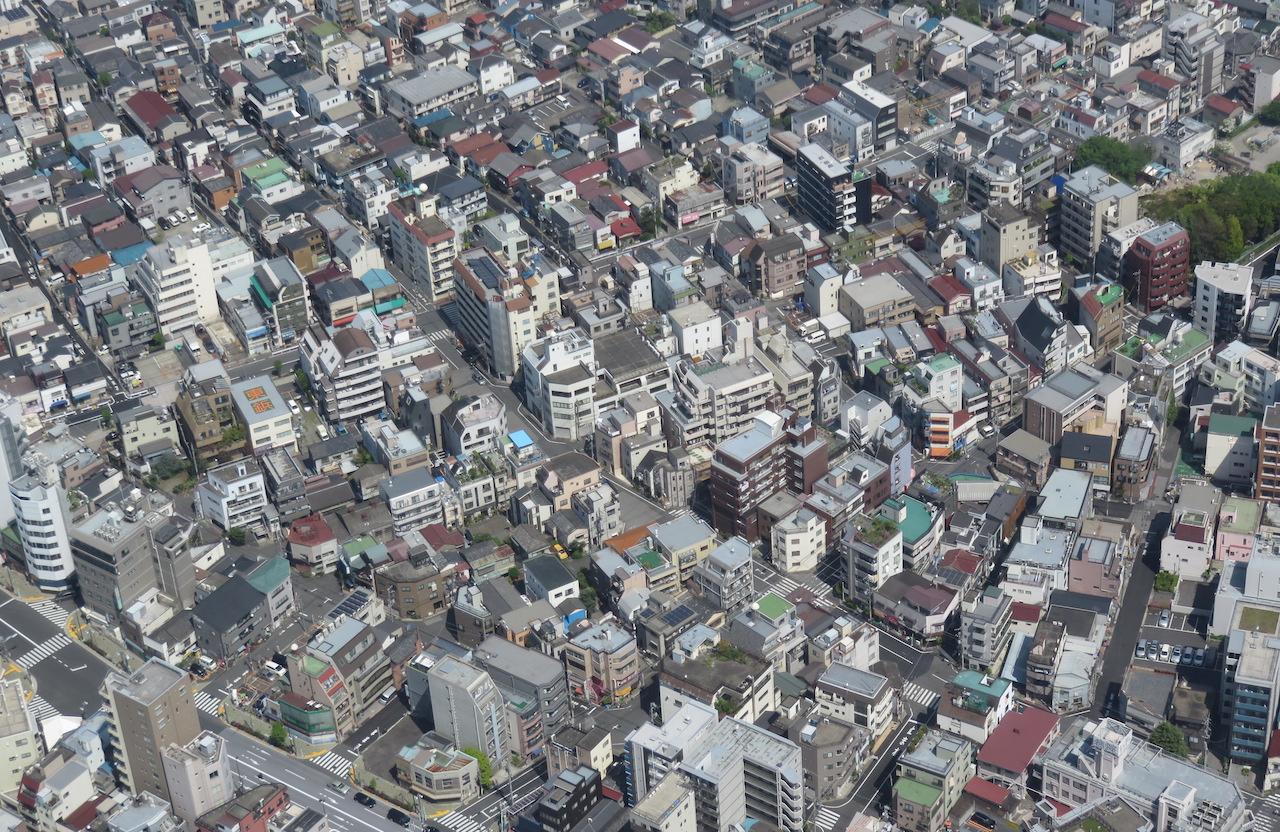


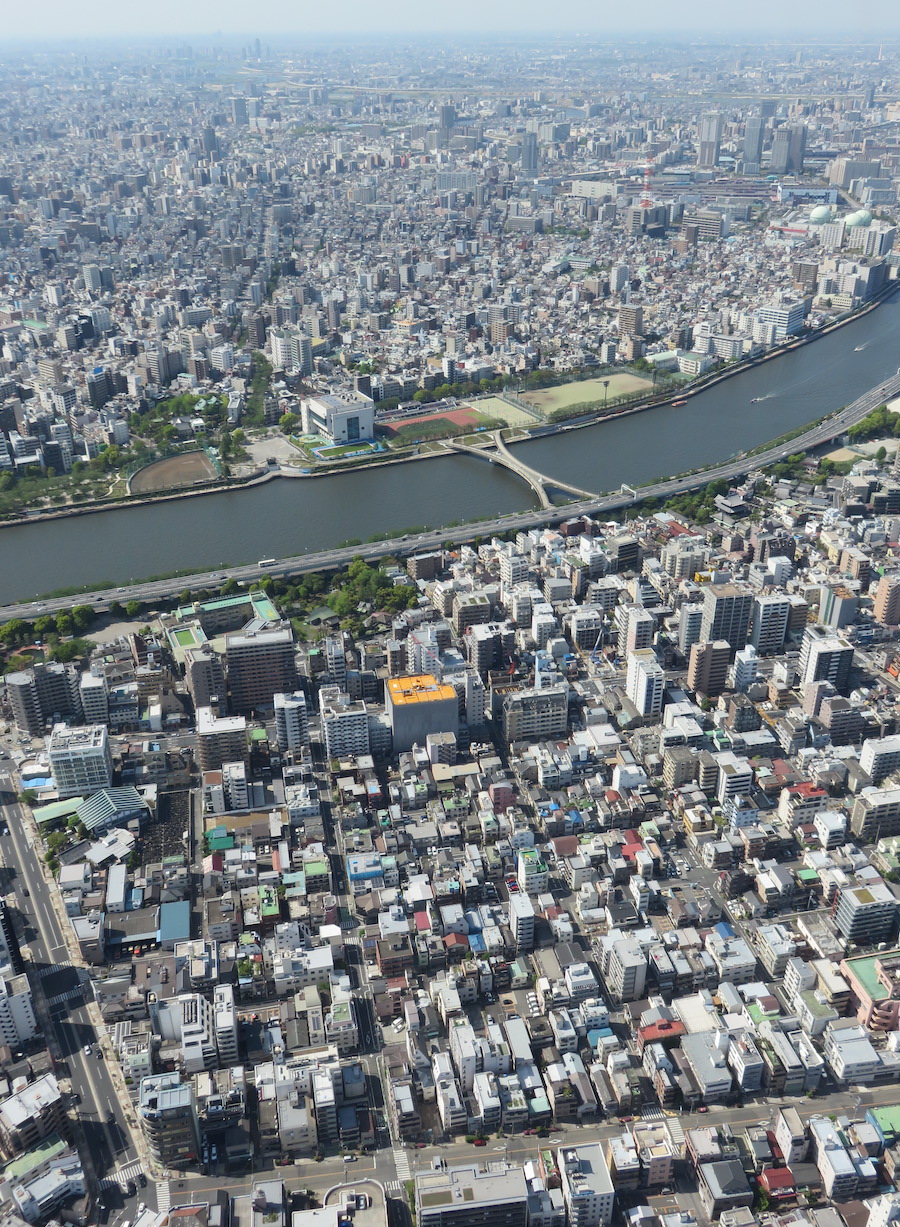

Central Radio and TV Tower, Beijing
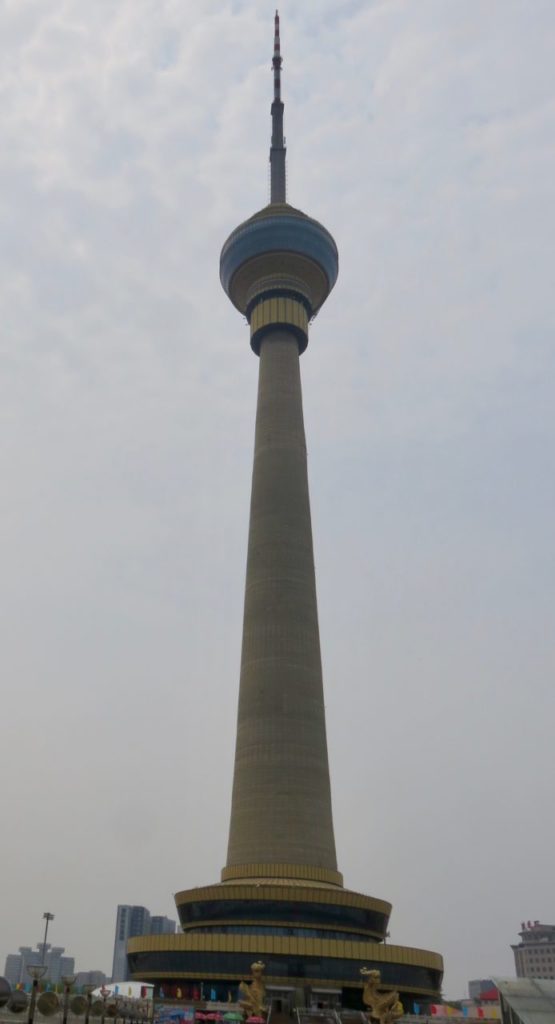
THERE are some wonderful sights in China’s capital and many good places to admire them from. Coal Hill in the centre of the city, for example, offers a splendid view across the golden tiled rooftops of the Forbidden City.
One place where you won’t see much, however, is the viewing deck of this tower in the west of the city. The notorious air pollution that frequently shrouds Beijing means you’ll struggle to see distant attractions such as Tiananmen Square, the Temple of Heaven and the sometimes bizarre architecture of the main business district.
Theoretically another tourist favourite, the Summer Palace, should be visible, but it was obscured by hazy smog when I visited. There are no doubt sound technical reasons for the location of this broadcasting tower. Nevertheless some believe the intention was to keep it away from the Communist Party compound that stands next to the Forbidden City and contains the official residences of the country’s leaders. Can’t have citizen-comrades being able to peer down at the cadres.
The most prominent feature is the large lake in Yuyuantan Park, but apart from that there’s little to look at other than scores of nondescript apartment and office blocks.
The building is often called the CCTV Tower, which can cause confusion as another Beijing landmark – the CMG Headquarters – is sometimes referred to by the same name. The other one is among the aforementioned examples of bizarre new office architecture to the east of the city.
This gleaming silver structure was no doubt intended to be a wow-inducing example of modern architecture. However the Chinese – who have a knack for coming up with amusing and disrespectful nicknames – were soon referring to it as “big shorts” because of its resemblance to a pair of short trousers.
Getting its measure: The China Central Radio and Television Tower is 1,329 ft high to the tip of its lightning rod, making it the world’s ninth-tallest tower. The observation platform is 781 ft high. The tower was designed by Paulus Snoeren and opened in 1994.
Updated December 2019
MORE INFO
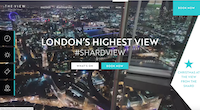 THE SHARD official site – everything you need to know before you go. READ MORE
THE SHARD official site – everything you need to know before you go. READ MORE
 BURJ KHALIFA official site – slick affair that lets you book your rickets in advance. READ MORE
BURJ KHALIFA official site – slick affair that lets you book your rickets in advance. READ MORE
 TOKYO SKYTREE official site – you’ll find plenty of information about the tower and the visitor experience here. READ MORE
TOKYO SKYTREE official site – you’ll find plenty of information about the tower and the visitor experience here. READ MORE
 TRAVEL CHINA GUIDE’S CCTV TOWER PAGE – not as detailed as the other sites, but you’ll find basic information here. READ MORE
TRAVEL CHINA GUIDE’S CCTV TOWER PAGE – not as detailed as the other sites, but you’ll find basic information here. READ MORE
RECOMMENDED
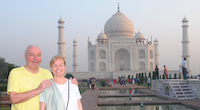 WELCOME TO OUR WORLD! Afaranwide’s home page – this is where you can find out about our latest posts and other highlights. READ MORE
WELCOME TO OUR WORLD! Afaranwide’s home page – this is where you can find out about our latest posts and other highlights. READ MORE
 TOP 10 VIRTUAL ATTRACTIONS: Many of the world’s most popular tourists sites are closed because of the coronavirus crisis, but you can still visit them virtually while you’re self-isolating. READ MORE
TOP 10 VIRTUAL ATTRACTIONS: Many of the world’s most popular tourists sites are closed because of the coronavirus crisis, but you can still visit them virtually while you’re self-isolating. READ MORE
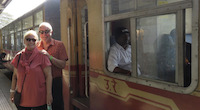 SHIMLA, QUEEN OF THE HILLS: Government officials once retreated to Shimla in the foothills of the Himalayas to escape India’s blazing hot summers. Now tourists make the same journey. READ MORE
SHIMLA, QUEEN OF THE HILLS: Government officials once retreated to Shimla in the foothills of the Himalayas to escape India’s blazing hot summers. Now tourists make the same journey. READ MORE
 TEN THINGS WE LEARNED: Our up-to-the-minute guide to creating a website, one step at a time. The costs, the mistakes – it’s what we wish we’d known when we started blogging. READ MORE
TEN THINGS WE LEARNED: Our up-to-the-minute guide to creating a website, one step at a time. The costs, the mistakes – it’s what we wish we’d known when we started blogging. READ MORE
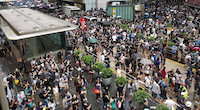 TROUBLED TIMES FOR EXPATS: Moving abroad can seem an idyllic prospect, but what happens when sudden upheavals or the inescapable realities of life intrude? READ MORE
TROUBLED TIMES FOR EXPATS: Moving abroad can seem an idyllic prospect, but what happens when sudden upheavals or the inescapable realities of life intrude? READ MORE
LET'S KEEP IN TOUCH!
The Towers and
the Glory

COLIN SIMPSON
Sky-High Viewing Platforms Compared
I LOVE super-tall buildings. There’s nothing like standing hundreds of feet in the air, peering out across the urban skyline and gazing down at the roofs, cars and people far below. While the appeal of this is lost on some, including Sue, whenever we visit a city with a lofty viewing platform I head straight for the high-speed lifts. Here’s a selection that includes the world’s two tallest structures, one that lets you look down on the Queen, and one strictly for students of atmospheric chemistry specialising in pollution.
The Shard, London

THE great thing about the viewing platforms at the Shard is that, apart from giving you a close-up view of the peak of what is a striking piece of architecture, there’s just so much to see.
Whereas Dubai’s much taller Burj Khalifa affords views of little more than newly built residential towers, shopping malls and sand, the pyramid-shaped, glass-clad Shard lets you peer down on an amazing array of historic sites and buildings.
Buckingham Palace (the London home of Britain’s Queen Elizabeth), the Houses of Parliament, the Thames with its bridges, St Paul’s Cathedral, the monumental Tate Modern art gallery, Tower Bridge, the Telecom Tower, the London Eye, they’re all spread out before you. There are famous sports venues – the distant arc of Wembley Stadium, the London Stadium (built for the 2012 Olympics), and the Oval cricket ground.
The railway lines snaking out from the nearby London Bridge Station offer an intriguing sight when seen from above. As you walk around the viewing galleries there’s always something new to see – Southwark Cathedral, the City of London and its high-rise office buildings with colourful nicknames such as the Gherkin, the Cheesegrater and the Walkie-Talkie, HMS Belfast, the London Eye – the list just goes on.
At one point while I was there some cleaners dangling on cables appeared outside, waving to visitors as they gave the green-tinted glass a good scrub.
Back on the ground, I found as I walked through the surrounding district that the Shard kept rearing up – towering above streets of shops or terraced housing, rising next to the tower at Tate Modern, or near Borough Market. It sometimes feels as if the tower is following you around.
Getting its measure: The 95-storey Shard, at 1,016 feet, is the tallest building in Britain, the fifth-tallest in Europe and the 96th tallest in the world. There are two viewing platforms, an indoor one on the 69th floor and a partially outdoor one on the 72nd, which together are marketed as The View From the Shard. The building was designed by Italian architect Renzo Piano and opened in 2013. It is 95 percent owned by Qatar.

















Burj Khalifa, Dubai

THE daddy of them all, still the world’s tallest building nine years after it opened, the Burj Khalifa soars above the city of Dubai and has helped cement its position as a tourism hotspot. While it’s undoubtedly fun to look out from the record-holder’s viewing platforms, and the height is impressive, as mentioned above there isn’t really a lot to see.
In one direction you gaze across the villas of the Jumeirah district towards the Gulf, the minarets of mosques built to a uniform design sticking up above the rooftops. There’s the skyscraper canyon of Sheikh Zayed Road, and the densely developed Dubai Marina and adjoining clusters of skyscrapers.
The Burj is surrounded by the Downtown Dubai residential and commercial area which includes the giant Dubai Mall, and other large developments are dotted around. Look in the direction away from the Gulf and the city soon peters out, and beyond lies the desert. Dubai’s towers are all so new, so similar, so numerous, that the views left me a little cold.
The fact that the Burj retains its world’s tallest record is thanks to the 2008 global financial meltdown. Several taller buildings were planned, including one in Dubai, but the projects were cancelled because of the crisis. This was a bonus for the building’s owners, who had expected they would soon have to come up with new ways of promoting it as a tourist attraction once its record status was usurped.
Until the opening ceremony in January 2010 the building had been known as the Burj Dubai, but it was then announced that it would be renamed the Burj Khalifa after Sheikh Khalifa, the President of the UAE and ruler of the adjoining (and much richer) emirate of Abu Dhabi. This came a month after Abu Dhabi gave Dubai a crucial $10 billion bailout as the financial meltdown reached the Gulf.
The Burj Khalifa had a starring role in the 2011 movie Mission Impossible – Ghost Protocol, with Tom “he does all his own stunts, you know” Cruise swinging around outside in trademark heart-stopping manner.
Getting its measure: The 160-storey Burj Khalifa, at 2,716.5 ft, is the tallest building and free-standing structure in the world, and holds many other records. It boasts the world’s highest outdoor observation deck on the 148th storey, and there are other decks on two lower floors – they’re branded as At the Top. The entrance – because it’s Dubai – is in a shopping mall. The tower was designed by American architect Adrian Smith.
Top picture: The side of the Burj Khalifa.















Tokyo Skytree

THE viewing decks on this mighty broadcasting tower let you see with your own eyes just how ridiculously large Japan’s capital is. Many districts are fairly low-level, sensible in a country that’s more at risk from earthquakes than most.
At ground level you can walk through historic temple quarters or along smart shopping streets oblivious to the fact that you’re in the world’s most heavily populated metropolitan area. The Greater Tokyo Area covers 5,200 square miles and has a population of more than 37 million.
While those who are afraid of crowds can remain blissfully unaware of this at sea level, all becomes clear when you ascend the Skytree’s high-speed lifts. Step out onto either of the two viewing decks and stretching away into the distance is mile after mile of urban sprawl.
On the day I visited this continued for as far as I could see, until the office blocks and apartment buildings dissolved into the distant haze. If it had been clear I’m told I would have been able to see Mount Fuji 59 miles away. You can see rivers and their bridges and ancient temples set among vast areas of low-level buildings.
Incidentally, the earthquake issue is addressed on the Skytree’s website. The home page declares: “It is confirmed that every earthquake shock absorber used in Skytree, which is produced by KYB Corp., has no problem with its performance. We are sorry for causing so many worries.” This comes into the category of “but I wasn’t worried until you mentioned it”, as it follows a scandal in which KYB admitted fabricating data about product quality.
Getting its measure: The Skytree is 2,080 ft high, making it the world’s second tallest structure after the Burj Khalifa. It’s the tallest tower globally – in the complex and sometimes confusing world of high man-made thing categorisation a tower excludes habitable buildings such as the Burj, even though the word ”burj” means tower in Arabic. There are two viewing decks, one at 450 metres (1,476 feet) and one at 350 metres (1,148 feet). The Skytree was designed by the Nikken Sekkei architecture firm, and opened in 2012.










Central Radio and TV Tower, Beijing

THERE are some wonderful sights in China’s capital and many good places to admire them from. Coal Hill in the centre of the city, for example, offers a splendid view across the golden tiled rooftops of the Forbidden City.
One place where you won’t see much, however, is the viewing deck of this tower in the west of the city. The notorious air pollution that frequently shrouds Beijing means you’ll struggle to see distant attractions such as Tiananmen Square, the Temple of Heaven and the sometimes bizarre architecture of the main business district.
Theoretically another tourist favourite, the Summer Palace, should be visible, but it was obscured by hazy smog when I visited. There are no doubt sound technical reasons for the location of this broadcasting tower. Nevertheless some believe the intention was to keep it away from the Communist Party compound that stands next to the Forbidden City and contains the official residences of the country’s leaders. Can’t have citizen-comrades being able to peer down at the cadres.
The most prominent feature is the large lake in Yuyuantan Park, but apart from that there’s little to look at other than scores of nondescript apartment and office blocks.
The building is often called the CCTV Tower, which can cause confusion as another Beijing landmark – the CMG Headquarters – is sometimes referred to by the same name. The other one is among the aforementioned examples of bizarre new office architecture to the east of the city.
This gleaming silver structure was no doubt intended to be a wow-inducing example of modern architecture. However the Chinese – who have a knack for coming up with amusing and disrespectful nicknames – were soon referring to it as “big shorts” because of its resemblance to a pair of short trousers.
Getting its measure: The China Central Radio and Television Tower is 1,329 ft high to the tip of its lightning rod, making it the world’s ninth-tallest tower. The observation platform is 781 ft high. The tower was designed by Paulus Snoeren and opened in 1994.
Updated December 2019
MORE INFO
 THE SHARD official site – everything you need to know before you go. READ MORE
THE SHARD official site – everything you need to know before you go. READ MORE
 BURJ KHALIFA official site – slick affair that lets you book your rickets in advance. READ MORE
BURJ KHALIFA official site – slick affair that lets you book your rickets in advance. READ MORE
 TOKYO SKYTREE official site – you’ll find plenty of information about the tower and the visitor experience here. READ MORE
TOKYO SKYTREE official site – you’ll find plenty of information about the tower and the visitor experience here. READ MORE
 TRAVEL CHINA GUIDE’S CCTV TOWER PAGE – not as detailed as the other sites, but you’ll find basic information here. READ MORE
TRAVEL CHINA GUIDE’S CCTV TOWER PAGE – not as detailed as the other sites, but you’ll find basic information here. READ MORE
RECOMMENDED
 WELCOME TO OUR WORLD! Afaranwide’s home page – this is where you can find out about our latest posts and other highlights. READ MORE
WELCOME TO OUR WORLD! Afaranwide’s home page – this is where you can find out about our latest posts and other highlights. READ MORE
 TOP 10 VIRTUAL ATTRACTIONS: Many of the world’s most popular tourists sites are closed because of the coronavirus crisis, but you can still visit them virtually while you’re self-isolating. READ MORE
TOP 10 VIRTUAL ATTRACTIONS: Many of the world’s most popular tourists sites are closed because of the coronavirus crisis, but you can still visit them virtually while you’re self-isolating. READ MORE
 SHIMLA, QUEEN OF THE HILLS: Government officials once retreated to Shimla in the foothills of the Himalayas to escape India’s blazing hot summers. Now tourists make the same journey. READ MORE
SHIMLA, QUEEN OF THE HILLS: Government officials once retreated to Shimla in the foothills of the Himalayas to escape India’s blazing hot summers. Now tourists make the same journey. READ MORE
 TEN THINGS WE LEARNED: Our up-to-the-minute guide to creating a website, one step at a time. The costs, the mistakes – it’s what we wish we’d known when we started blogging. READ MORE
TEN THINGS WE LEARNED: Our up-to-the-minute guide to creating a website, one step at a time. The costs, the mistakes – it’s what we wish we’d known when we started blogging. READ MORE
 TROUBLED TIMES FOR EXPATS: Moving abroad can seem an idyllic prospect, but what happens when sudden upheavals or the inescapable realities of life intrude? READ MORE
TROUBLED TIMES FOR EXPATS: Moving abroad can seem an idyllic prospect, but what happens when sudden upheavals or the inescapable realities of life intrude? READ MORE
LET'S KEEP IN TOUCH!
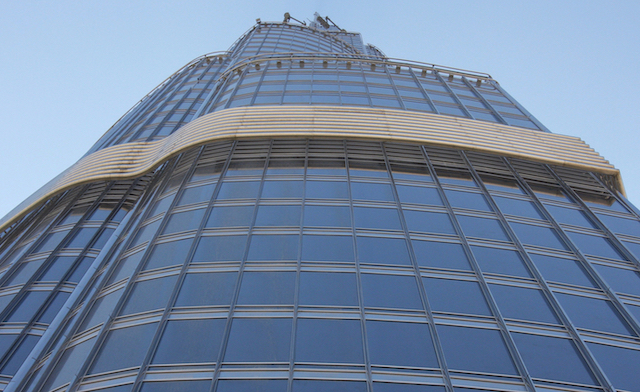
The Towers and the Glory
Sky-High Viewing Platforms Compared

COLIN SIMPSON
I LOVE super-tall buildings. There’s nothing like standing hundreds of feet in the air, peering out across the urban skyline and gazing down at the roofs, cars and people far below. While the appeal of this is lost on some, including Sue, whenever we visit a city with a lofty viewing platform I head straight for the high-speed lifts. Here’s a selection that includes the world’s two tallest structures, one that lets you look down on the Queen, and one strictly for students of atmospheric chemistry specialising in pollution.
The Shard, London

THE great thing about the viewing platforms at the Shard is that, apart from giving you a close-up view of the peak of what is a striking piece of architecture, there’s just so much to see.
Whereas Dubai’s much taller Burj Khalifa affords views of little more than newly built residential towers, shopping malls and sand, the pyramid-shaped, glass-clad Shard lets you peer down on an amazing array of historic sites and buildings.
Buckingham Palace (the London home of Britain’s Queen Elizabeth), the Houses of Parliament, the Thames with its bridges, St Paul’s Cathedral, the monumental Tate Modern art gallery, Tower Bridge, the Telecom Tower, the London Eye, they’re all spread out before you. There are famous sports venues – the distant arc of Wembley Stadium, the London Stadium (built for the 2012 Olympics), and the Oval cricket ground.
The railway lines snaking out from the nearby London Bridge Station offer an intriguing sight when seen from above. As you walk around the viewing galleries there’s always something new to see – Southwark Cathedral, the City of London and its high-rise office buildings with colourful nicknames such as the Gherkin, the Cheesegrater and the Walkie-Talkie, HMS Belfast, the London Eye – the list just goes on.
At one point while I was there some cleaners dangling on cables appeared outside, waving to visitors as they gave the green-tinted glass a good scrub.
Back on the ground, I found as I walked through the surrounding district that the Shard kept rearing up – towering above streets of shops or terraced housing, rising next to the tower at Tate Modern, or near Borough Market. It sometimes feels as if the tower is following you around.
Getting its measure: The 95-storey Shard, at 1,016 feet, is the tallest building in Britain, the fifth-tallest in Europe and the 96th tallest in the world. There are two viewing platforms, an indoor one on the 69th floor and a partially outdoor one on the 72nd, which together are marketed as The View From the Shard. The building was designed by Italian architect Renzo Piano and opened in 2013. It is 95 percent owned by Qatar.

















Burj Khalifa, Dubai

THE daddy of them all, still the world’s tallest building nine years after it opened, the Burj Khalifa soars above the city of Dubai and has helped cement its position as a tourism hotspot. While it’s undoubtedly fun to look out from the record-holder’s viewing platforms, and the height is impressive, as mentioned above there isn’t really a lot to see.
In one direction you gaze across the villas of the Jumeirah district towards the Gulf, the minarets of mosques built to a uniform design sticking up above the rooftops. There’s the skyscraper canyon of Sheikh Zayed Road, and the densely developed Dubai Marina and adjoining clusters of skyscrapers.
The Burj is surrounded by the Downtown Dubai residential and commercial area which includes the giant Dubai Mall, and other large developments are dotted around. Look in the direction away from the Gulf and the city soon peters out, and beyond lies the desert. Dubai’s towers are all so new, so similar, so numerous, that the views left me a little cold.
The fact that the Burj retains its world’s tallest record is thanks to the 2008 global financial meltdown. Several taller buildings were planned, including one in Dubai, but the projects were cancelled because of the crisis. This was a bonus for the building’s owners, who had expected they would soon have to come up with new ways of promoting it as a tourist attraction once its record status was usurped.
Until the opening ceremony in January 2010 the building had been known as the Burj Dubai, but it was then announced that it would be renamed the Burj Khalifa after Sheikh Khalifa, the President of the UAE and ruler of the adjoining (and much richer) emirate of Abu Dhabi. This came a month after Abu Dhabi gave Dubai a crucial $10 billion bailout as the financial meltdown reached the Gulf.
The Burj Khalifa had a starring role in the 2011 movie Mission Impossible – Ghost Protocol, with Tom “he does all his own stunts, you know” Cruise swinging around outside in trademark heart-stopping manner.
Getting its measure: The 160-storey Burj Khalifa, at 2,716.5 ft, is the tallest building and free-standing structure in the world, and holds many other records. It boasts the world’s highest outdoor observation deck on the 148th storey, and there are other decks on two lower floors – they’re branded as At the Top. The entrance – because it’s Dubai – is in a shopping mall. The tower was designed by American architect Adrian Smith.
Top picture: The side of the Burj Khalifa.















Tokyo Skytree

THE viewing decks on this mighty broadcasting tower let you see with your own eyes just how ridiculously large Japan’s capital is. Many districts are fairly low-level, sensible in a country that’s more at risk from earthquakes than most.
At ground level you can walk through historic temple quarters or along smart shopping streets oblivious to the fact that you’re in the world’s most heavily populated metropolitan area. The Greater Tokyo Area covers 5,200 square miles and has a population of more than 37 million.
While those who are afraid of crowds can remain blissfully unaware of this at sea level, all becomes clear when you ascend the Skytree’s high-speed lifts. Step out onto either of the two viewing decks and stretching away into the distance is mile after mile of urban sprawl.
On the day I visited this continued for as far as I could see, until the office blocks and apartment buildings dissolved into the distant haze. If it had been clear I’m told I would have been able to see Mount Fuji 59 miles away. You can see rivers and their bridges and ancient temples set among vast areas of low-level buildings.
Incidentally, the earthquake issue is addressed on the Skytree’s website. The home page declares: “It is confirmed that every earthquake shock absorber used in Skytree, which is produced by KYB Corp., has no problem with its performance. We are sorry for causing so many worries.” This comes into the category of “but I wasn’t worried until you mentioned it”, as it follows a scandal in which KYB admitted fabricating data about product quality.
Getting its measure: The Skytree is 2,080 ft high, making it the world’s second tallest structure after the Burj Khalifa. It’s the tallest tower globally – in the complex and sometimes confusing world of high man-made thing categorisation a tower excludes habitable buildings such as the Burj, even though the word ”burj” means tower in Arabic. There are two viewing decks, one at 450 metres (1,476 feet) and one at 350 metres (1,148 feet). The Skytree was designed by the Nikken Sekkei architecture firm, and opened in 2012.










Central Radio and TV Tower, Beijing

THERE are some wonderful sights in China’s capital and many good places to admire them from. Coal Hill in the centre of the city, for example, offers a splendid view across the golden tiled rooftops of the Forbidden City.
One place where you won’t see much, however, is the viewing deck of this tower in the west of the city. The notorious air pollution that frequently shrouds Beijing means you’ll struggle to see distant attractions such as Tiananmen Square, the Temple of Heaven and the sometimes bizarre architecture of the main business district.
Theoretically another tourist favourite, the Summer Palace, should be visible, but it was obscured by hazy smog when I visited. There are no doubt sound technical reasons for the location of this broadcasting tower. Nevertheless some believe the intention was to keep it away from the Communist Party compound that stands next to the Forbidden City and contains the official residences of the country’s leaders. Can’t have citizen-comrades being able to peer down at the cadres.
The most prominent feature is the large lake in Yuyuantan Park, but apart from that there’s little to look at other than scores of nondescript apartment and office blocks.
The building is often called the CCTV Tower, which can cause confusion as another Beijing landmark – the CMG Headquarters – is sometimes referred to by the same name. The other one is among the aforementioned examples of bizarre new office architecture to the east of the city.
This gleaming silver structure was no doubt intended to be a wow-inducing example of modern architecture. However the Chinese – who have a knack for coming up with amusing and disrespectful nicknames – were soon referring to it as “big shorts” because of its resemblance to a pair of short trousers.
Getting its measure: The China Central Radio and Television Tower is 1,329 ft high to the tip of its lightning rod, making it the world’s ninth-tallest tower. The observation platform is 781 ft high. The tower was designed by Paulus Snoeren and opened in 1994.
Updated December 2019
MORE INFO
 THE SHARD official site – everything you need to know before you go. READ MORE
THE SHARD official site – everything you need to know before you go. READ MORE
 BURJ KHALIFA official site – slick affair that lets you book your rickets in advance. READ MORE
BURJ KHALIFA official site – slick affair that lets you book your rickets in advance. READ MORE
 TOKYO SKYTREE official site – you’ll find plenty of information about the tower and the visitor experience here. READ MORE
TOKYO SKYTREE official site – you’ll find plenty of information about the tower and the visitor experience here. READ MORE
 TRAVEL CHINA GUIDE’S CCTV TOWER PAGE – not as detailed as the other sites, but you’ll find basic information here. READ MORE
TRAVEL CHINA GUIDE’S CCTV TOWER PAGE – not as detailed as the other sites, but you’ll find basic information here. READ MORE
RECOMMENDED
 WELCOME TO OUR WORLD! Afaranwide’s home page – this is where you can find out about our latest posts and other highlights. READ MORE
WELCOME TO OUR WORLD! Afaranwide’s home page – this is where you can find out about our latest posts and other highlights. READ MORE
 TOP 10 VIRTUAL ATTRACTIONS: Many of the world’s most popular tourists sites are closed because of the coronavirus crisis, but you can still visit them virtually while you’re self-isolating. READ MORE
TOP 10 VIRTUAL ATTRACTIONS: Many of the world’s most popular tourists sites are closed because of the coronavirus crisis, but you can still visit them virtually while you’re self-isolating. READ MORE
 SHIMLA, QUEEN OF THE HILLS: Government officials once retreated to Shimla in the foothills of the Himalayas to escape India’s blazing hot summers. Now tourists make the same journey. READ MORE
SHIMLA, QUEEN OF THE HILLS: Government officials once retreated to Shimla in the foothills of the Himalayas to escape India’s blazing hot summers. Now tourists make the same journey. READ MORE
 TEN THINGS WE LEARNED: Our up-to-the-minute guide to creating a website, one step at a time. The costs, the mistakes – it’s what we wish we’d known when we started blogging. READ MORE
TEN THINGS WE LEARNED: Our up-to-the-minute guide to creating a website, one step at a time. The costs, the mistakes – it’s what we wish we’d known when we started blogging. READ MORE
 TROUBLED TIMES FOR EXPATS: Moving abroad can seem an idyllic prospect, but what happens when sudden upheavals or the inescapable realities of life intrude? READ MORE
TROUBLED TIMES FOR EXPATS: Moving abroad can seem an idyllic prospect, but what happens when sudden upheavals or the inescapable realities of life intrude? READ MORE



